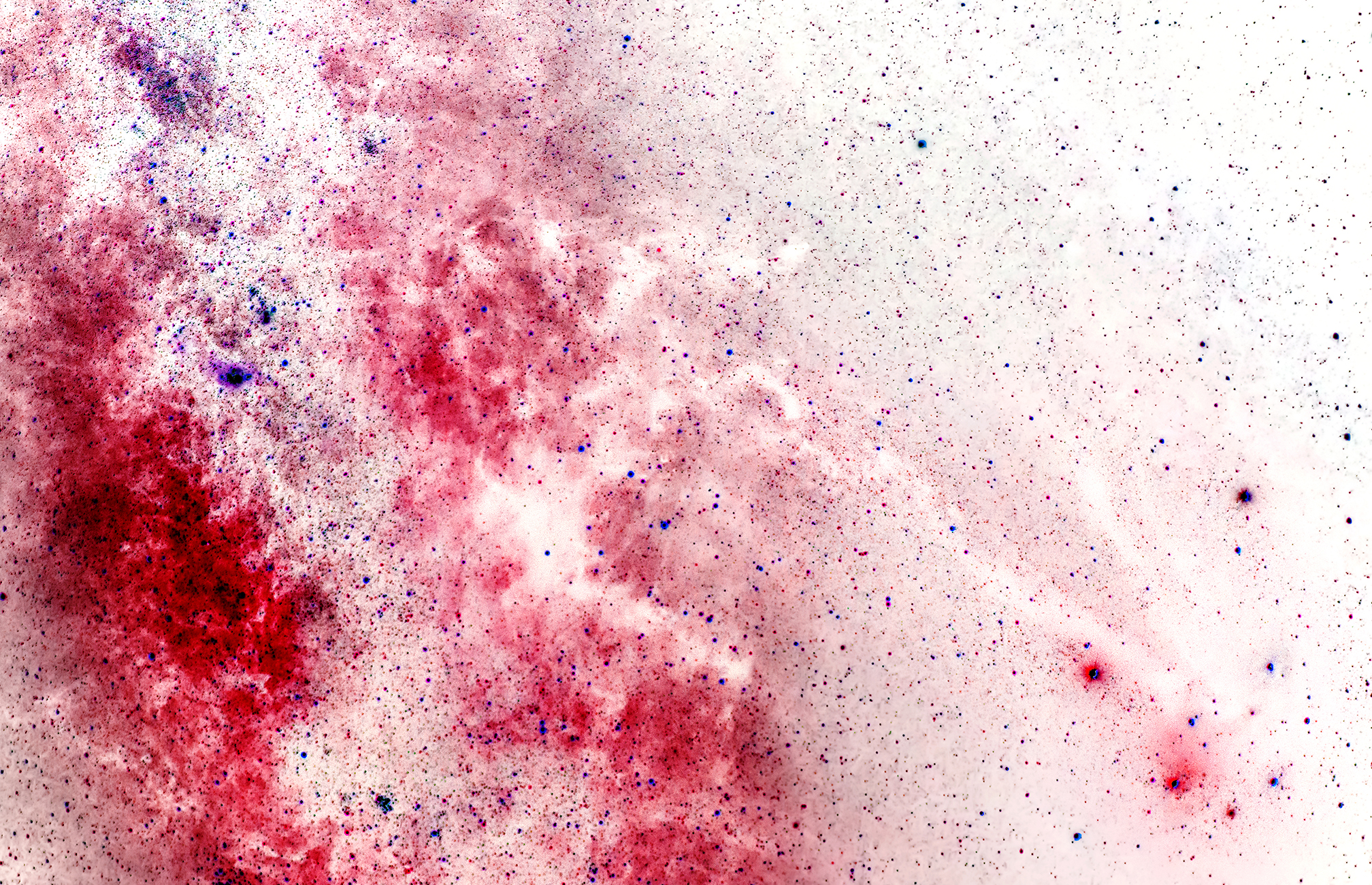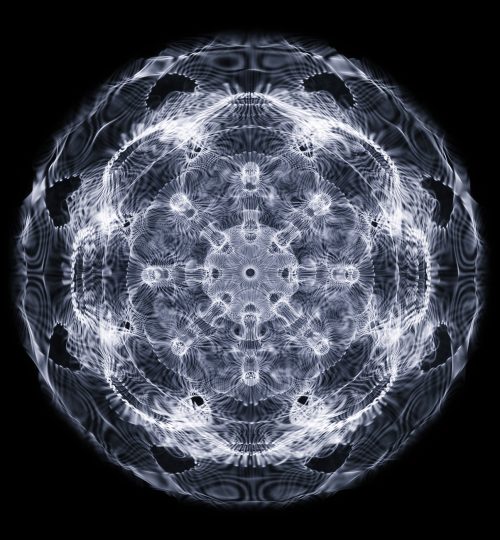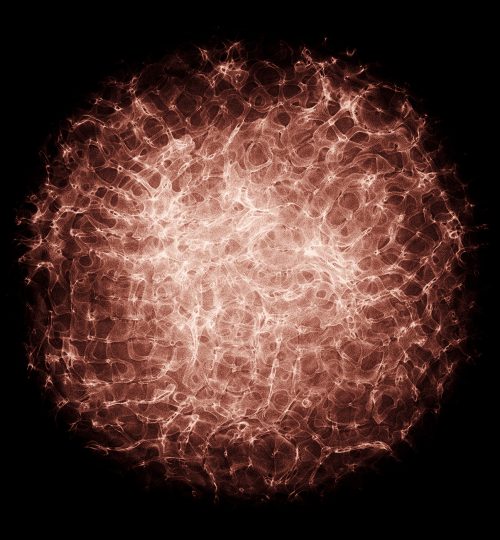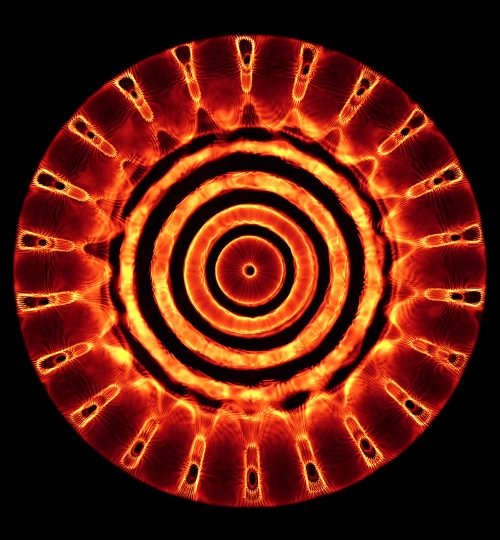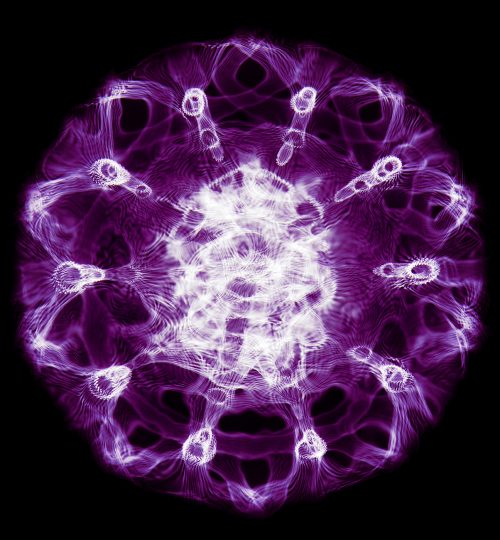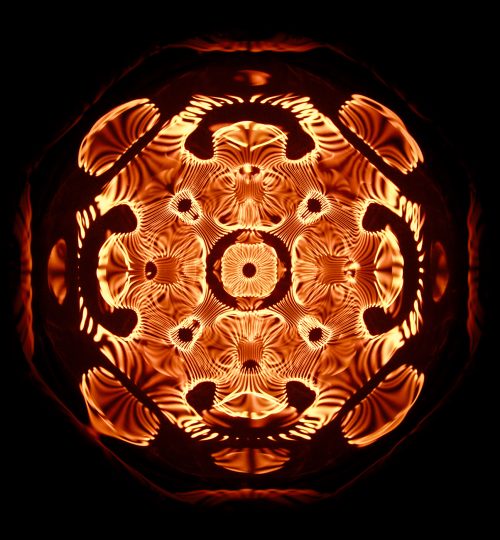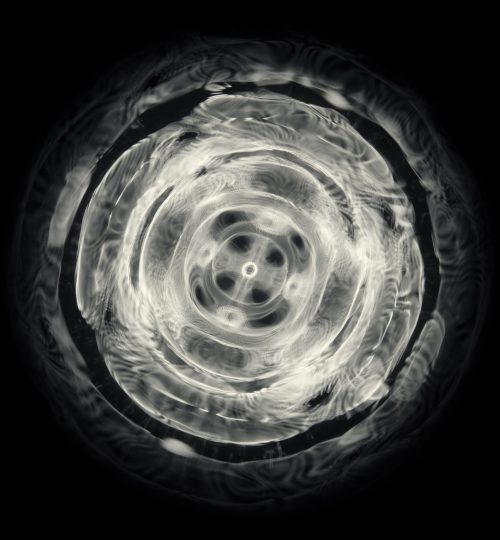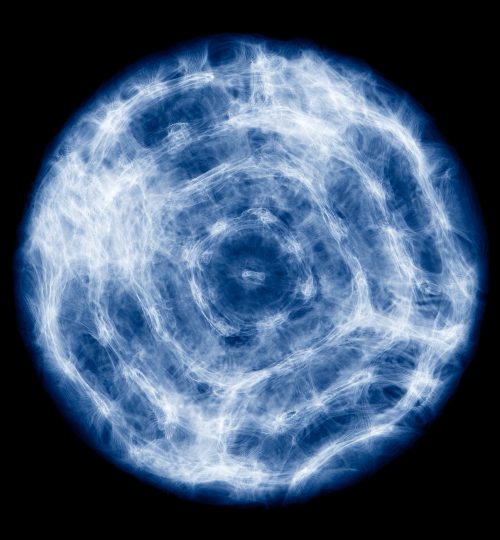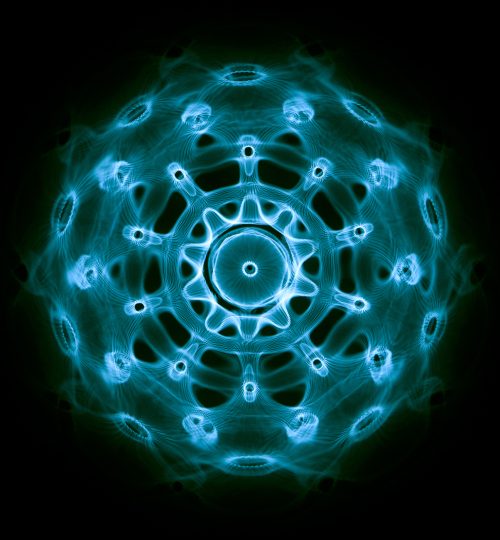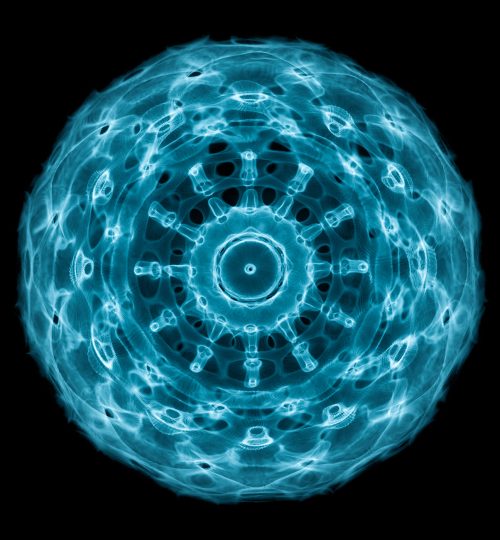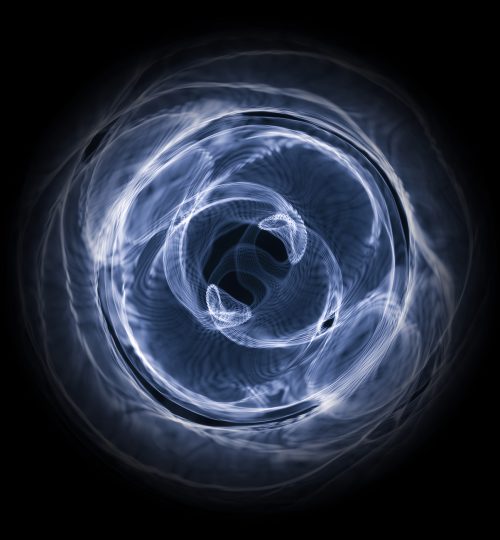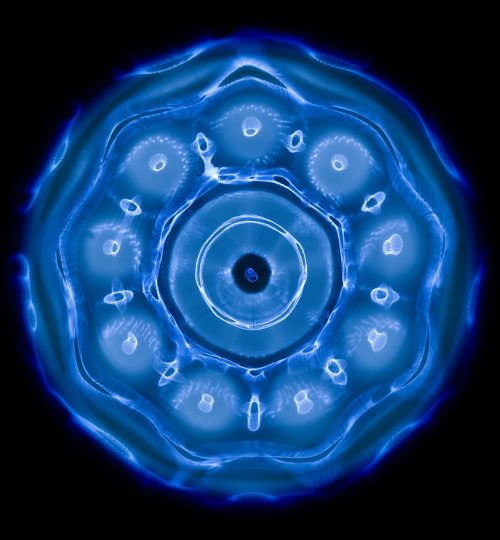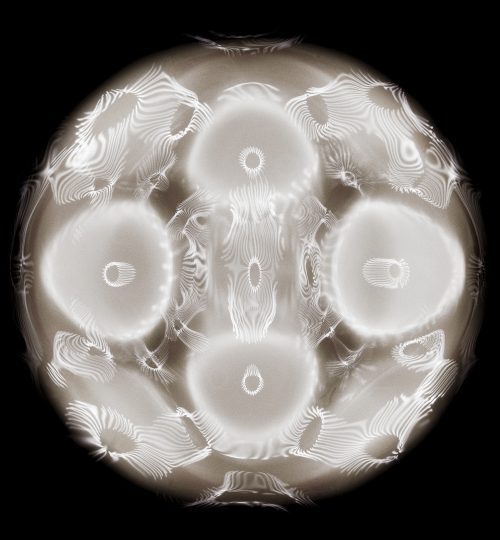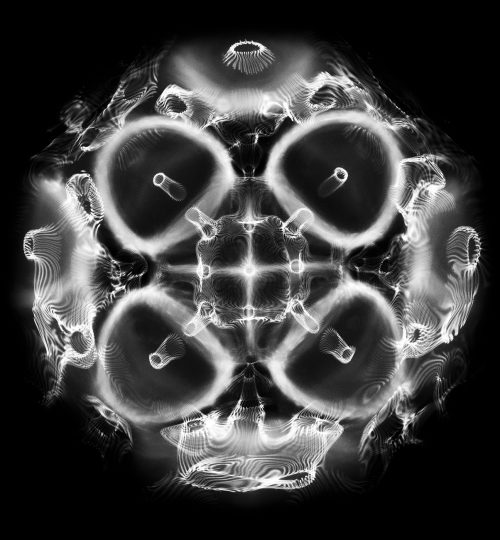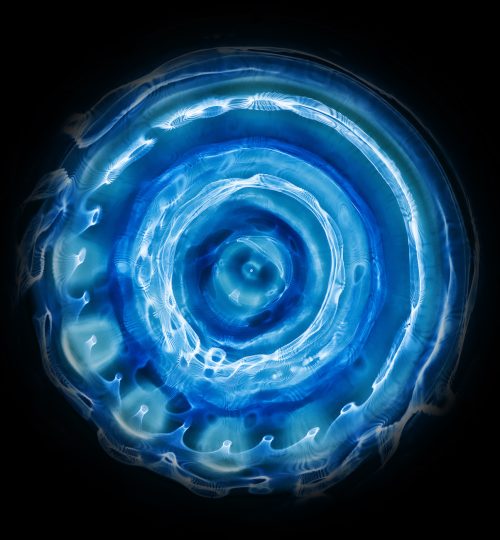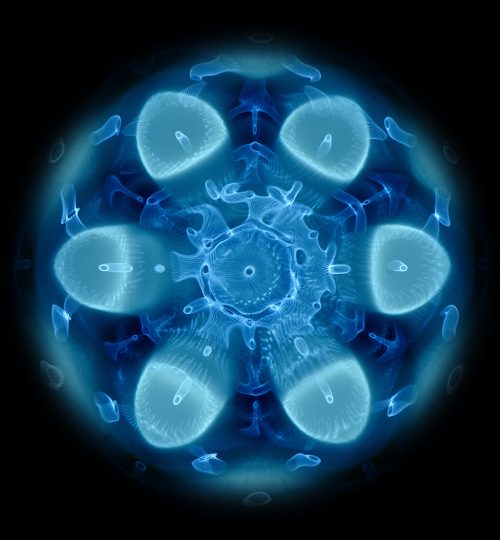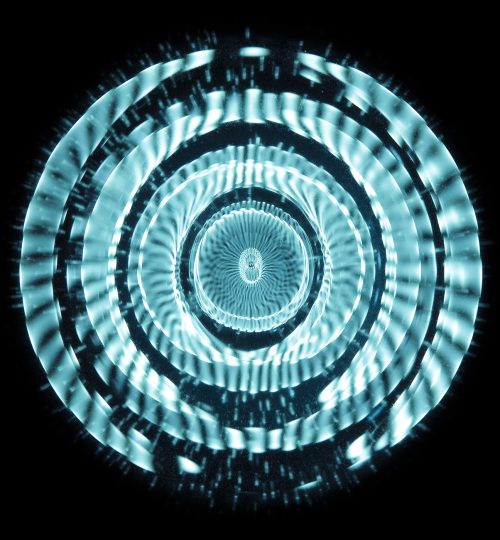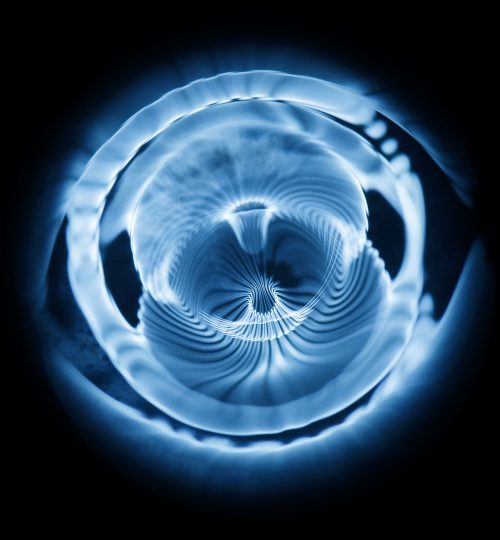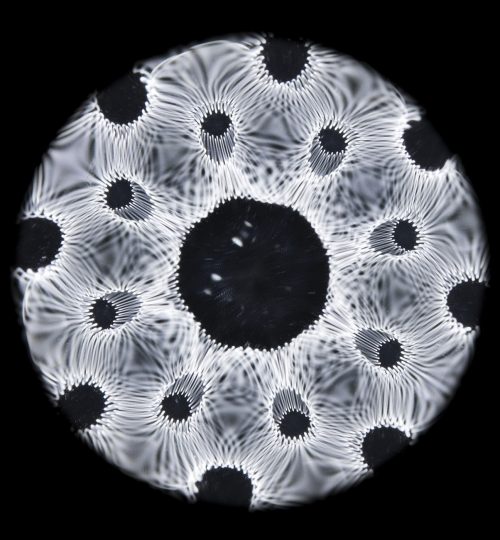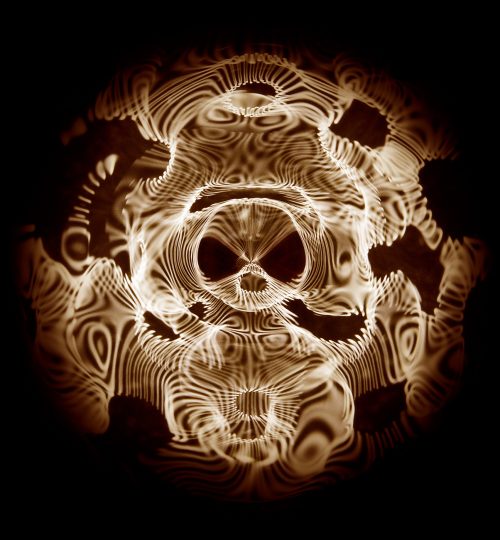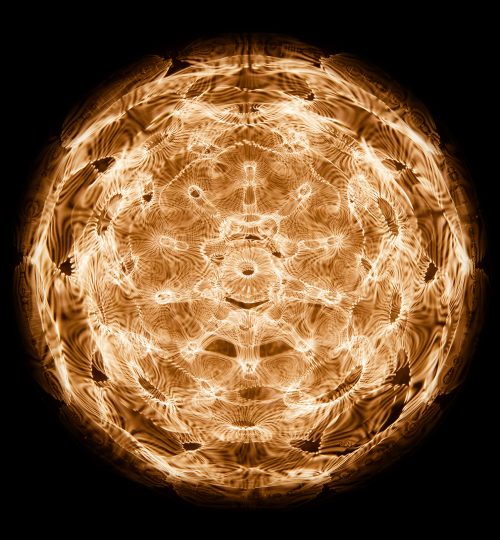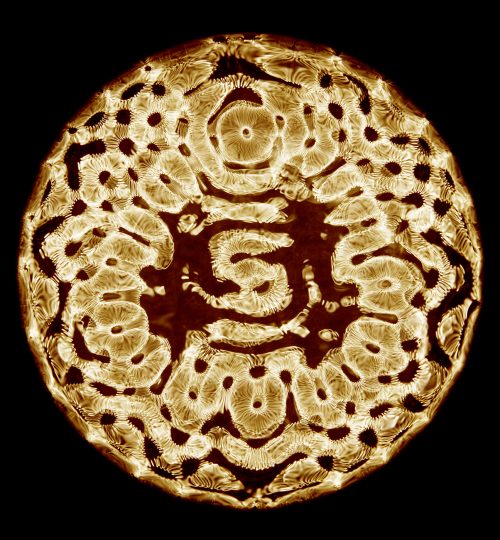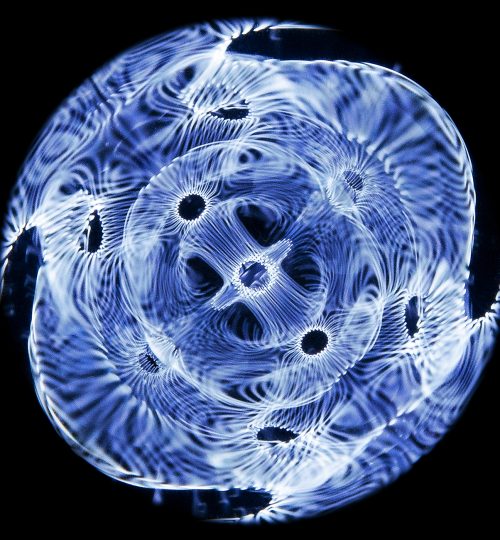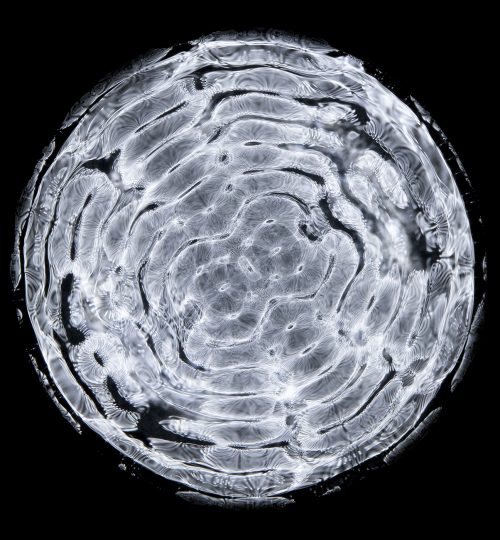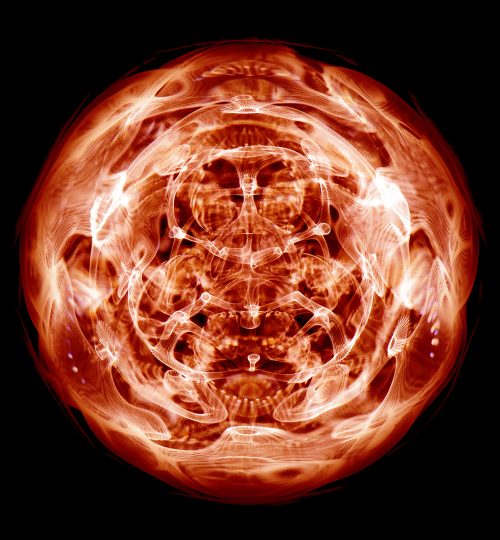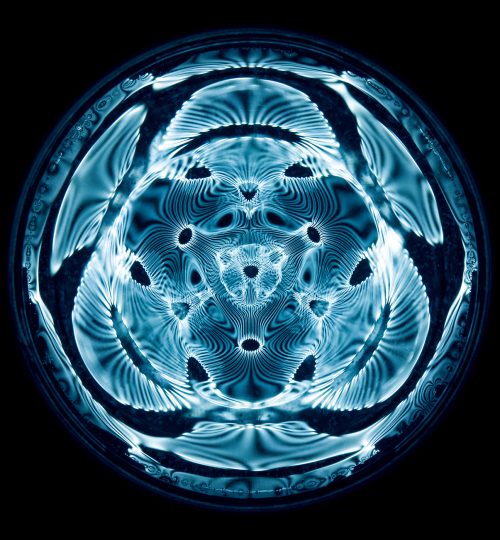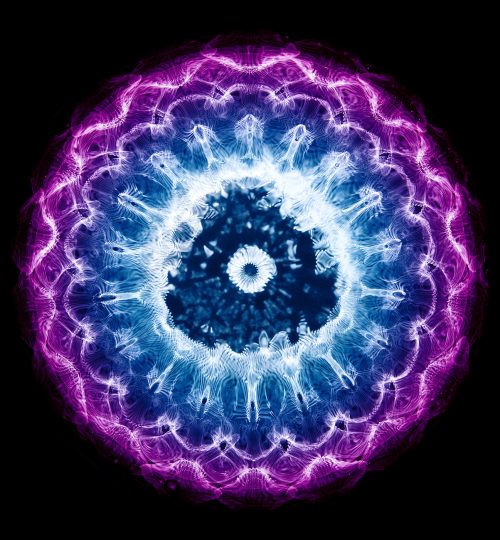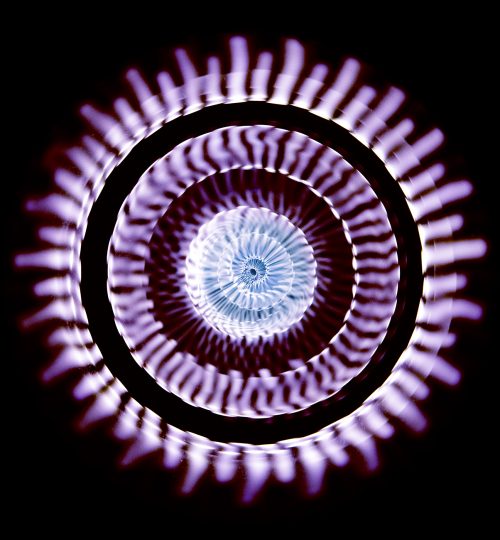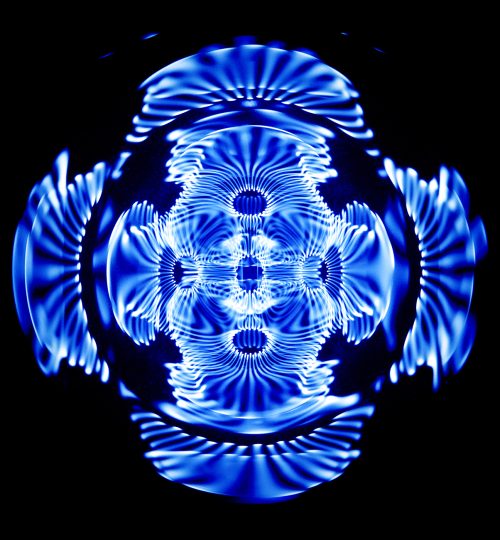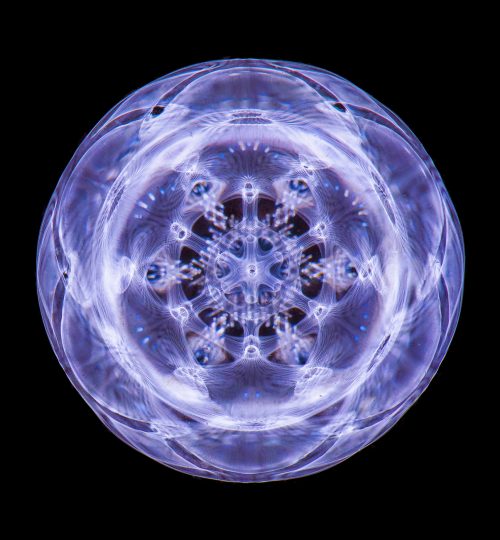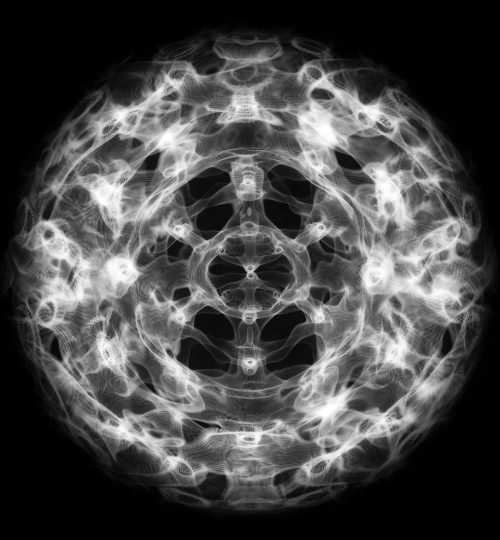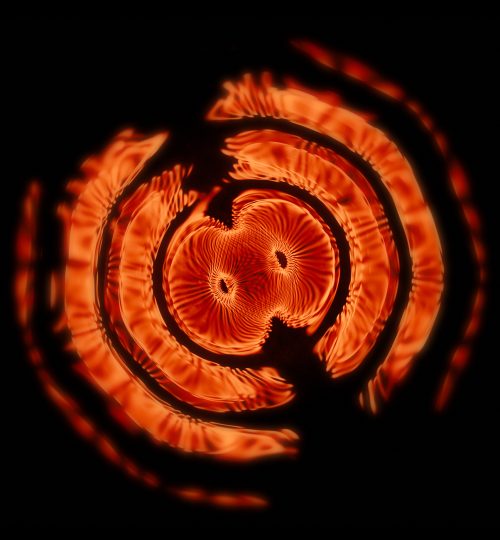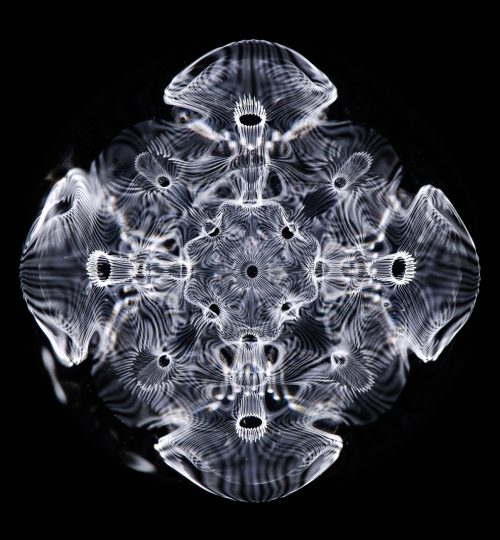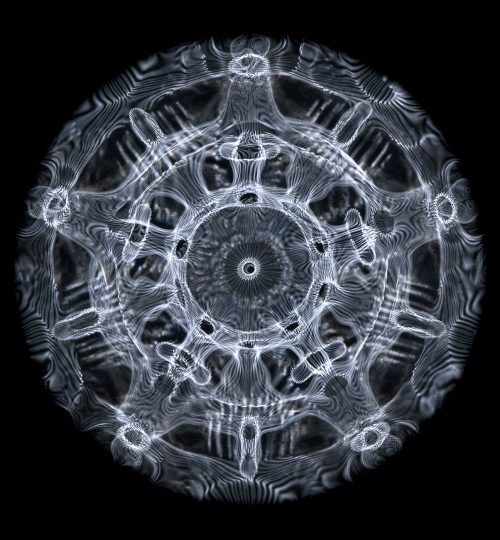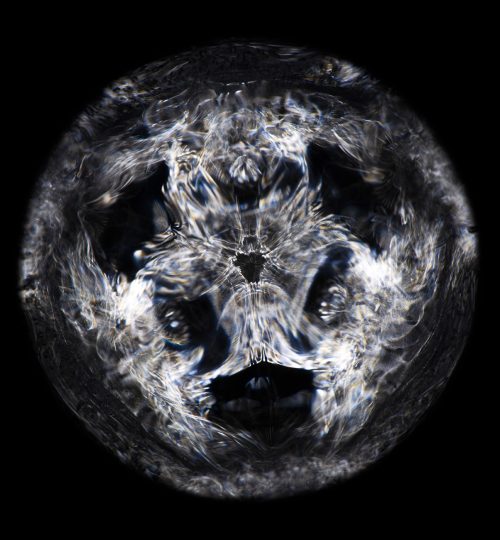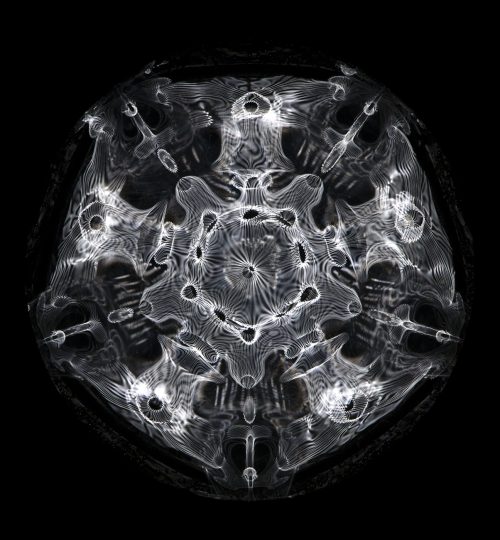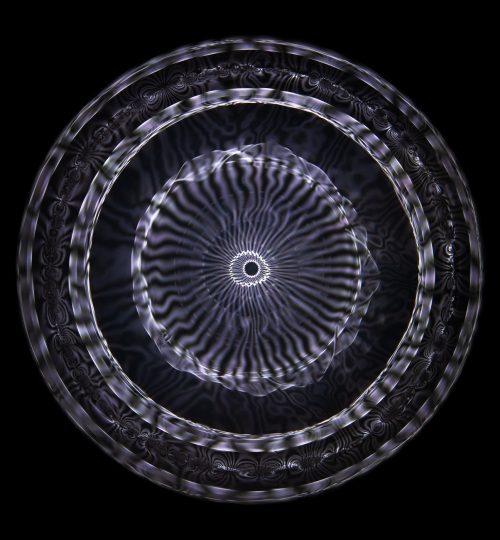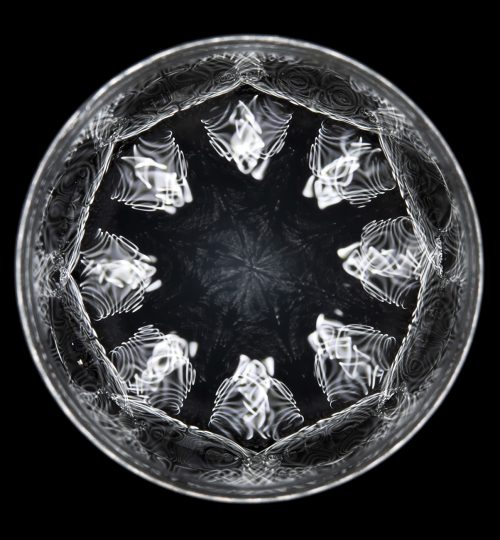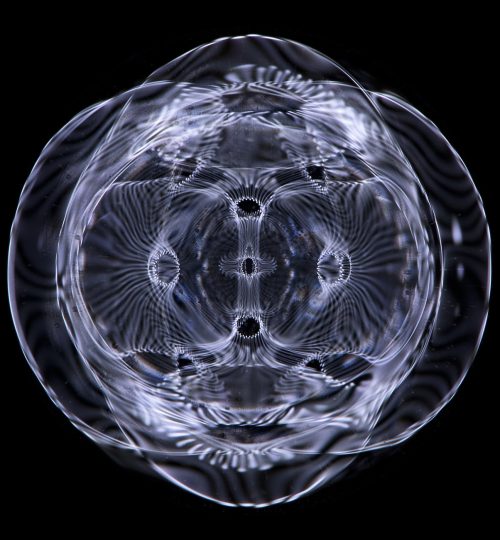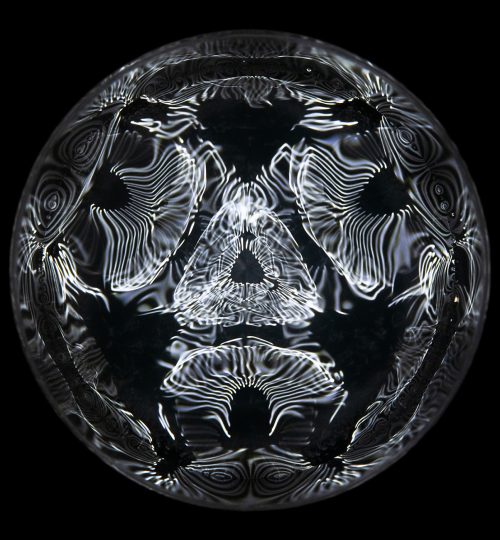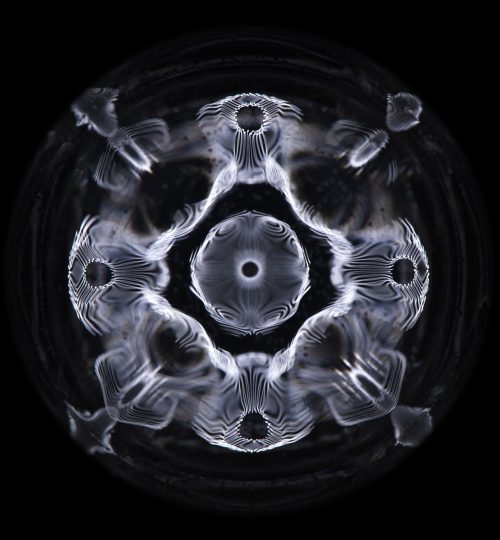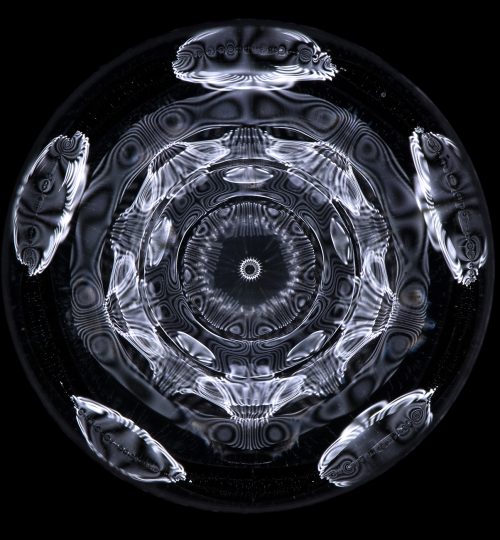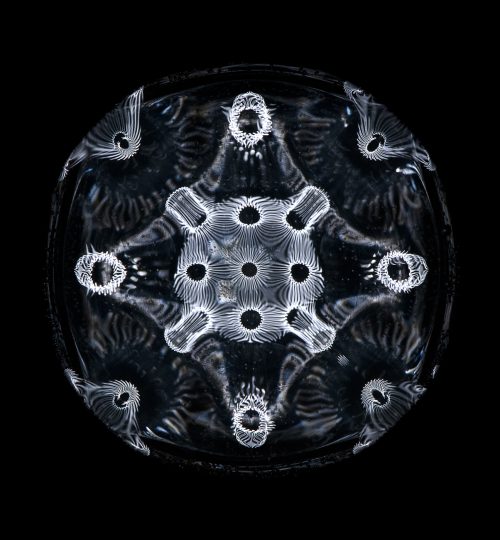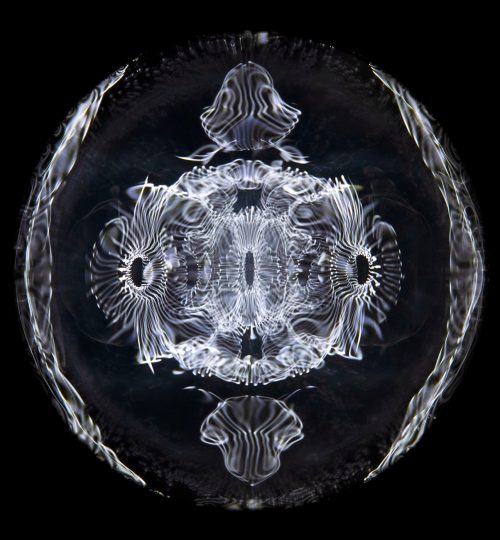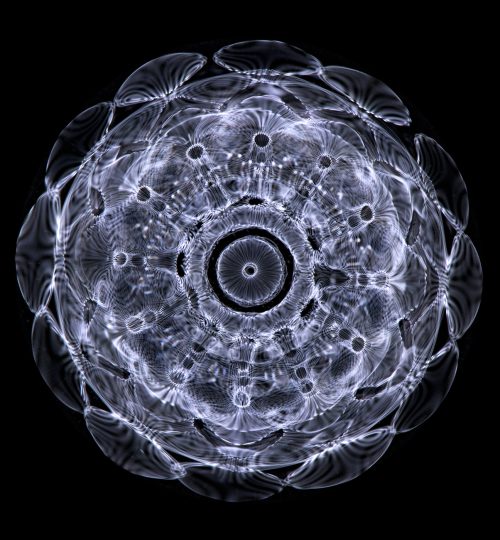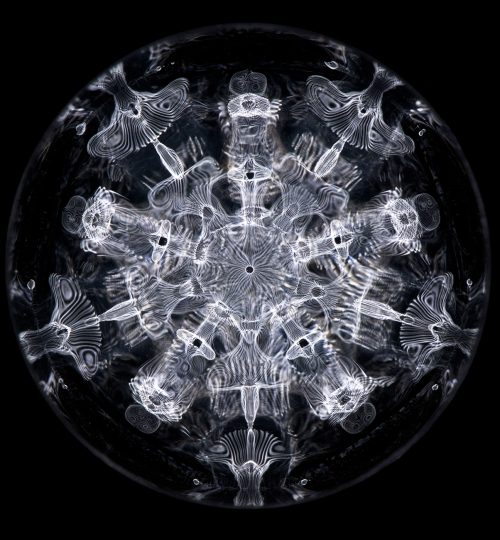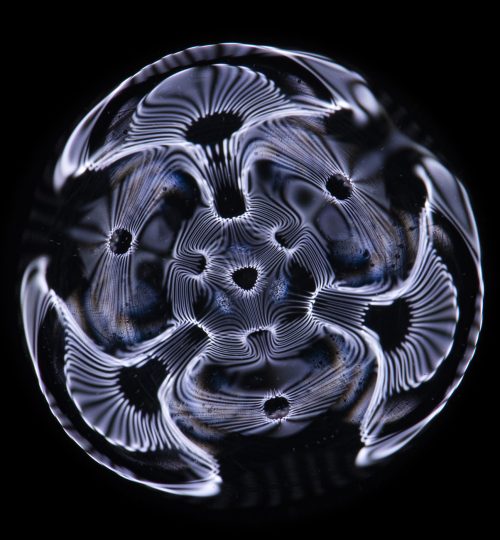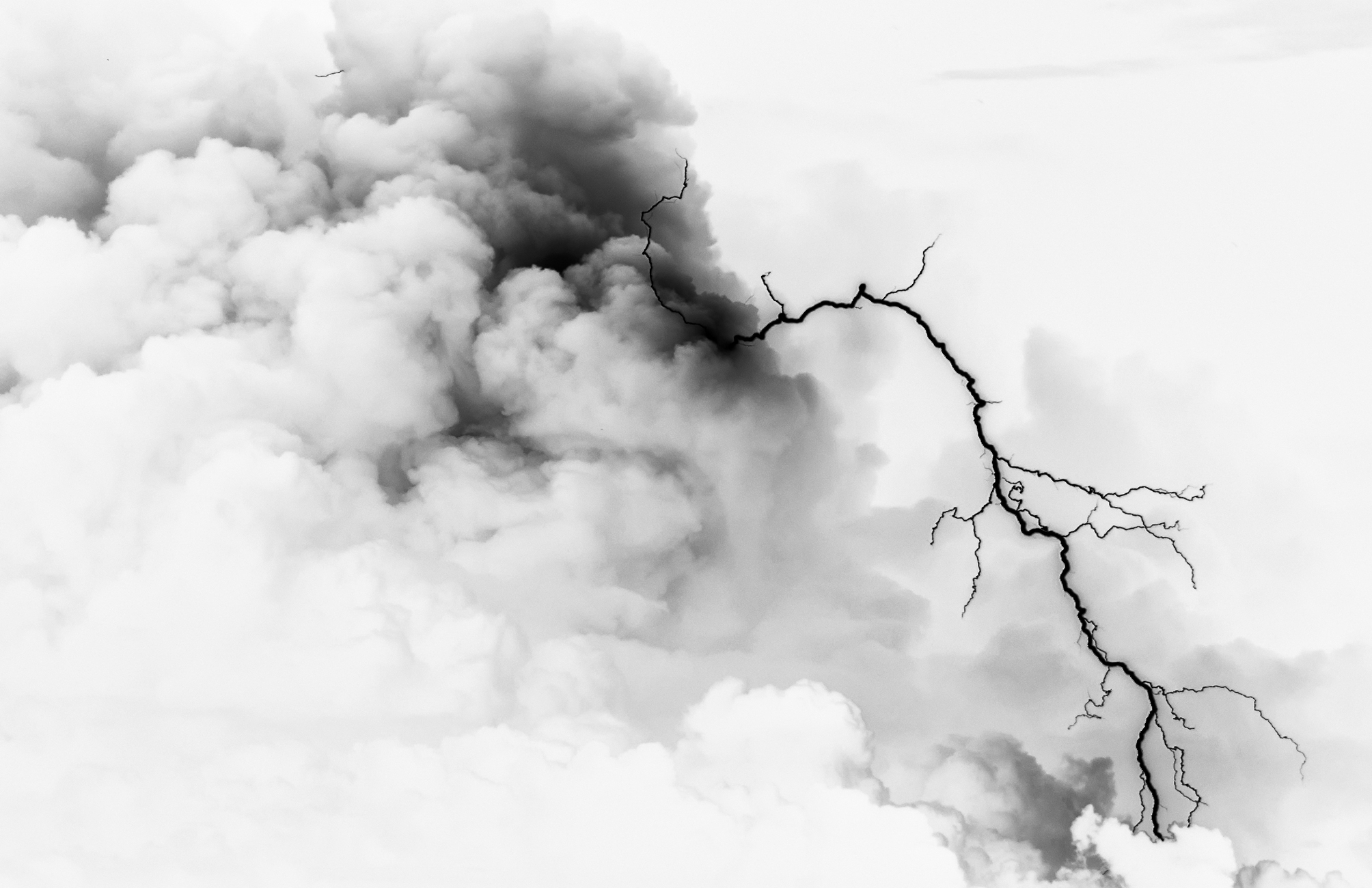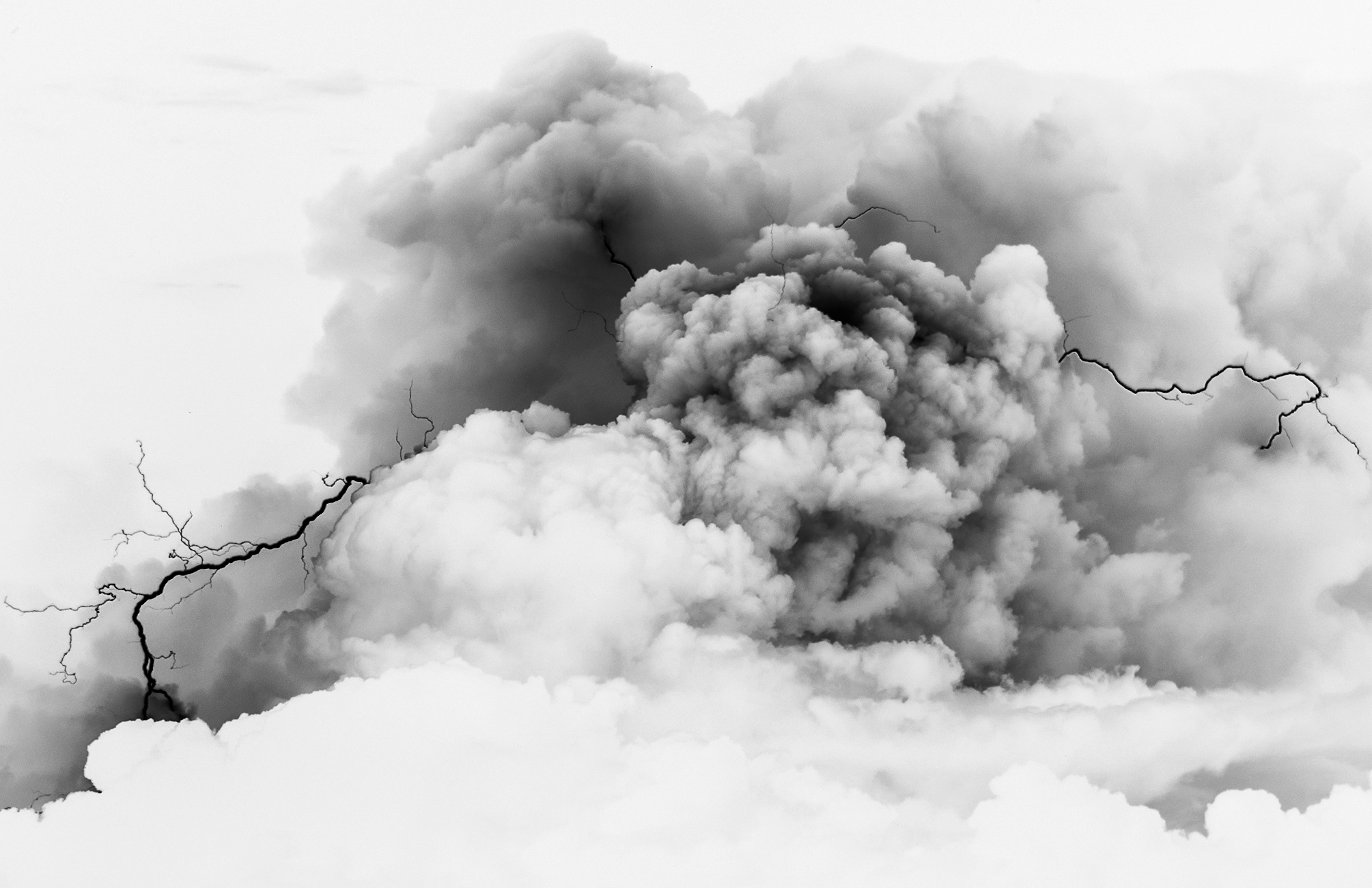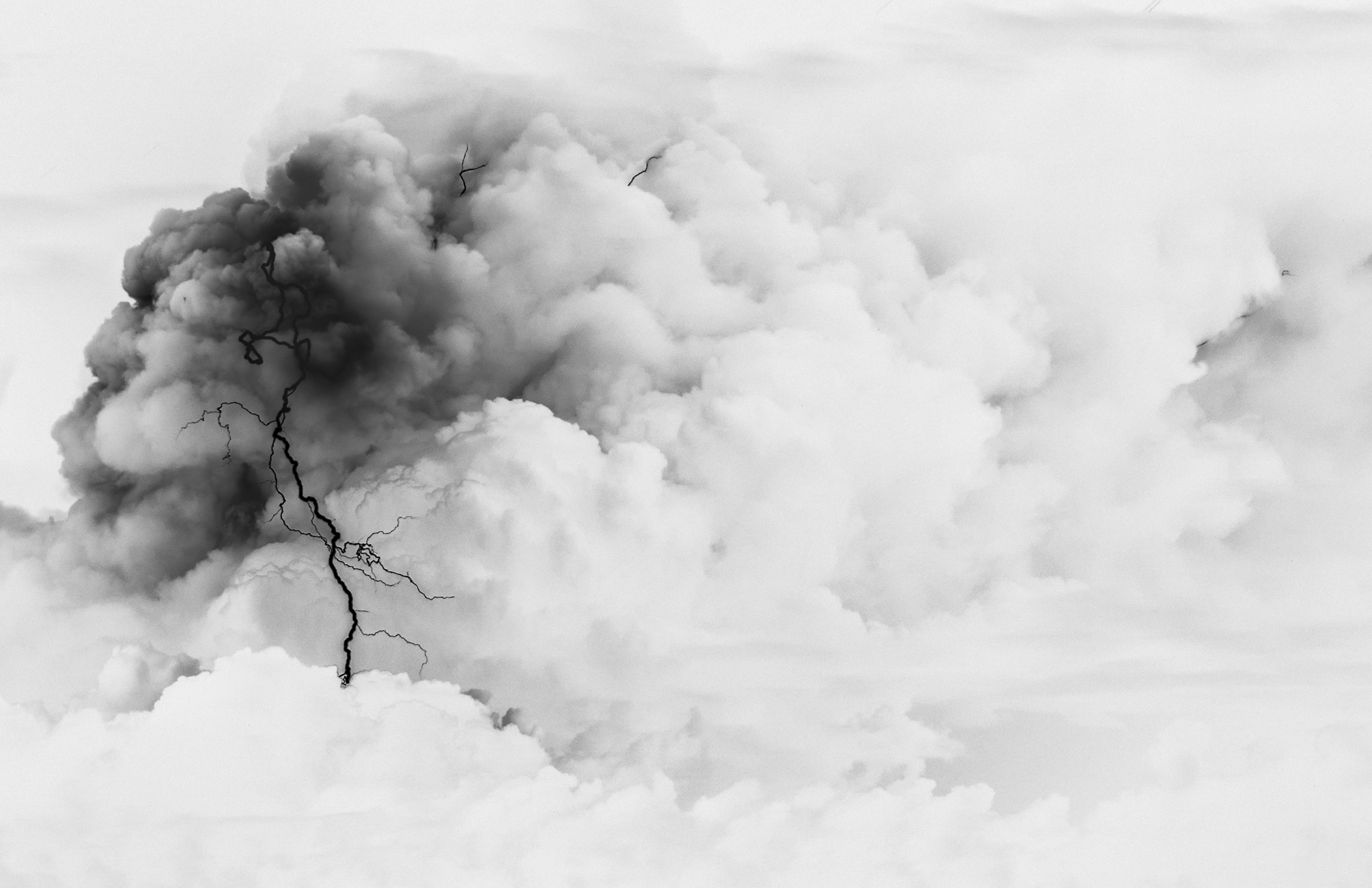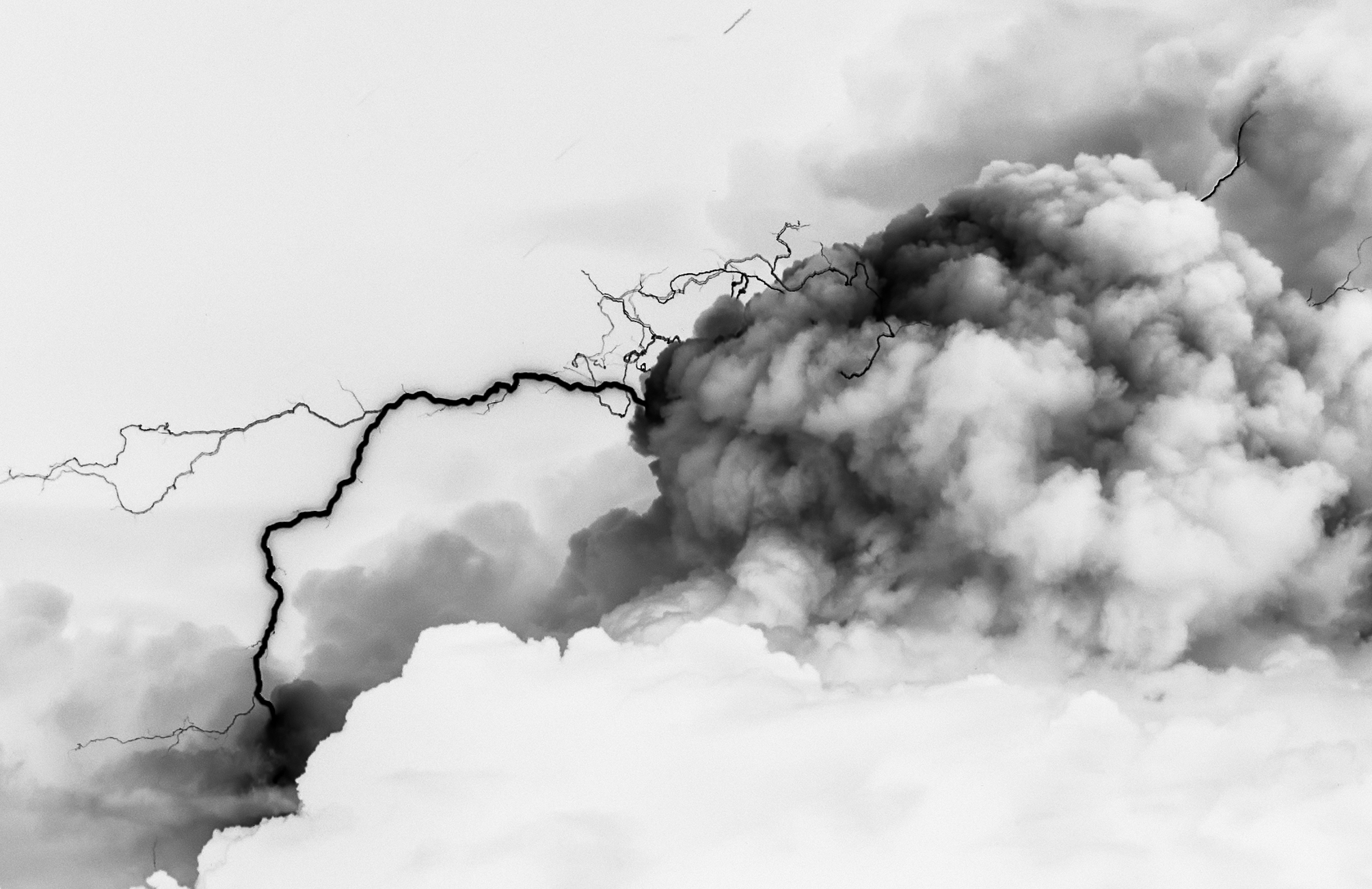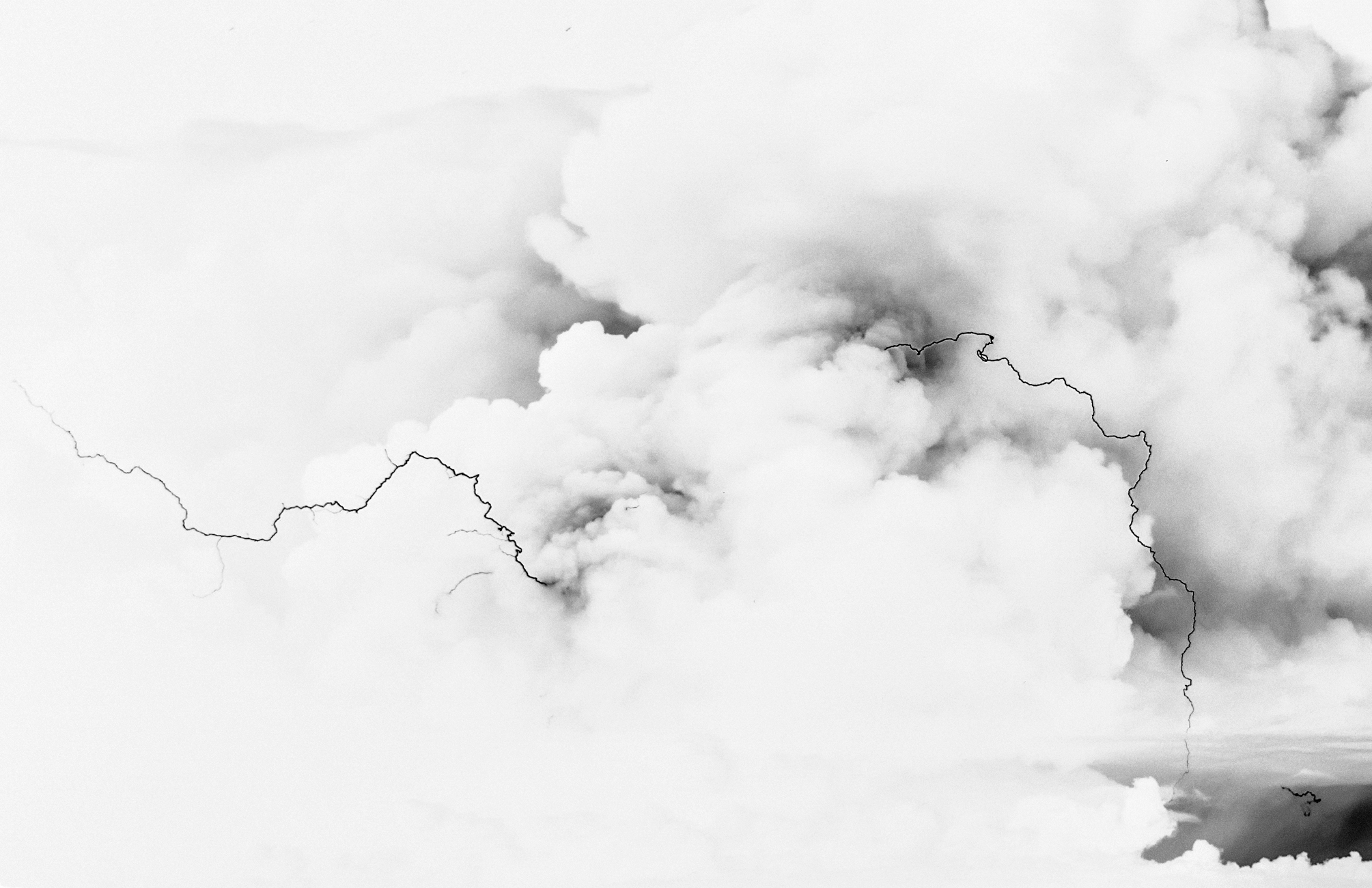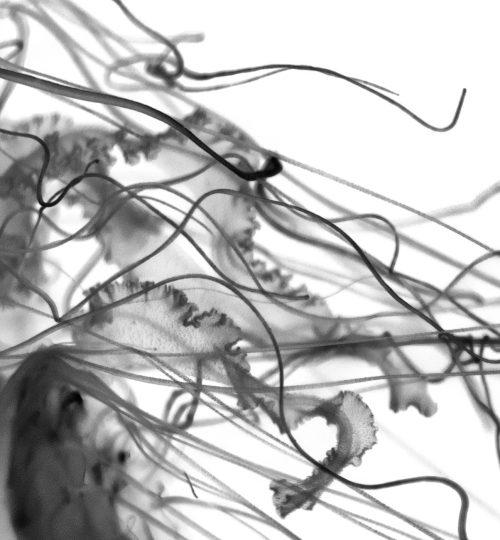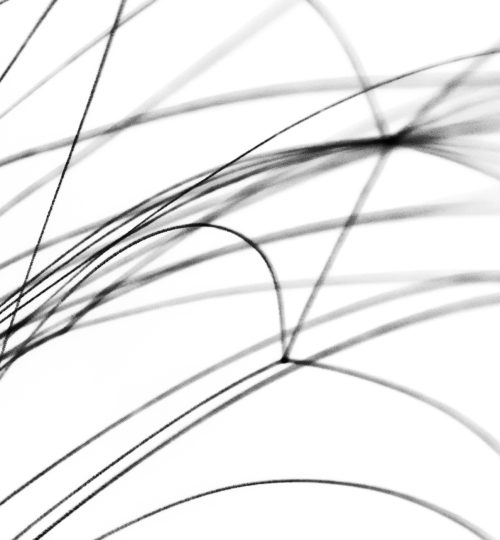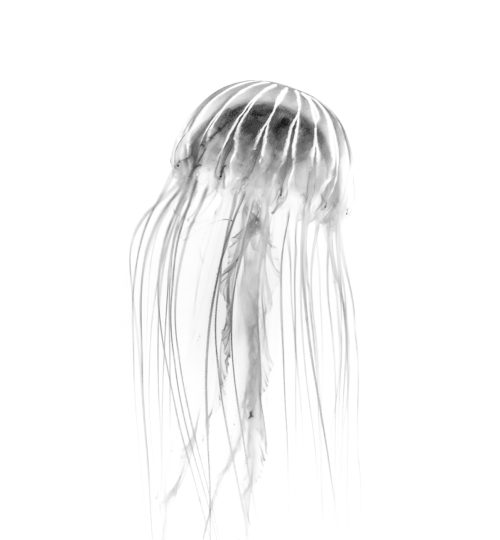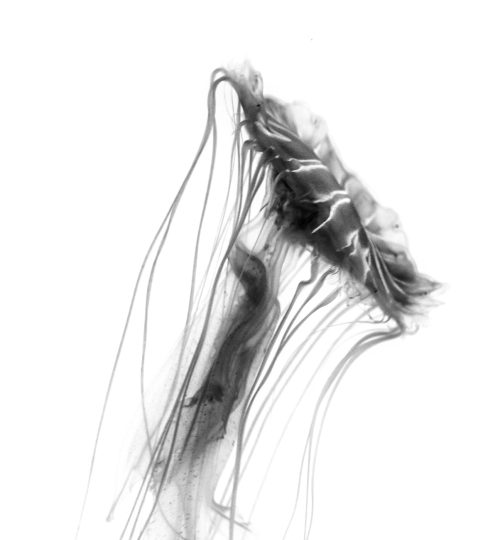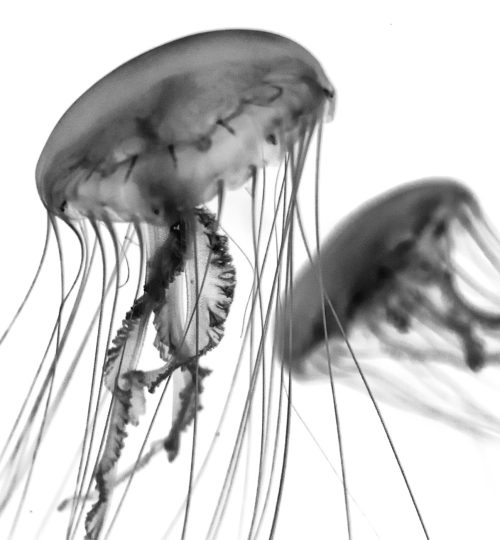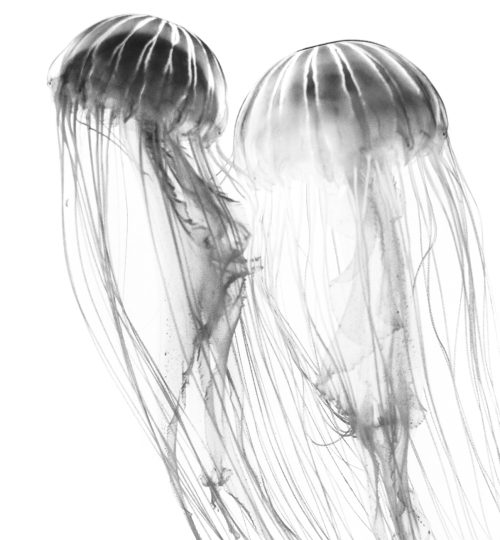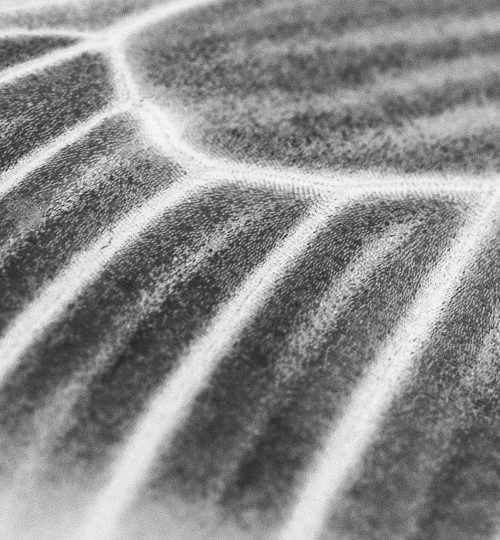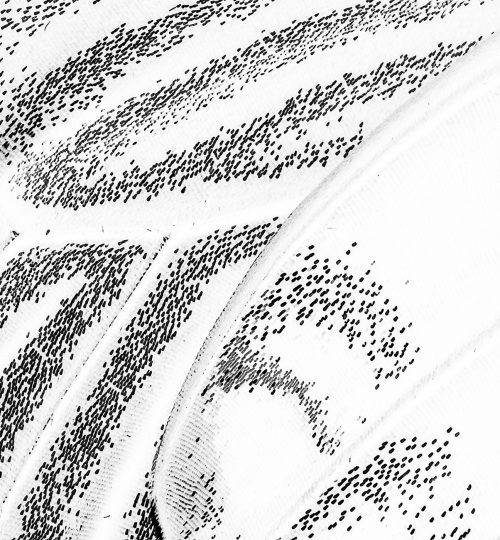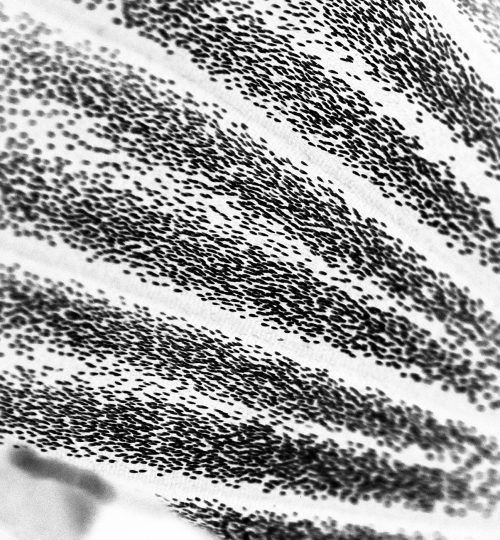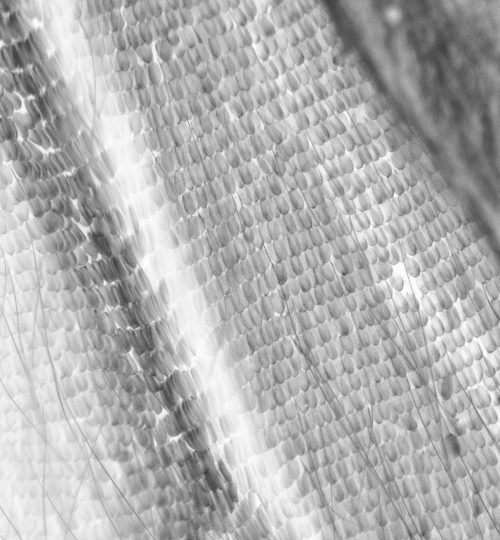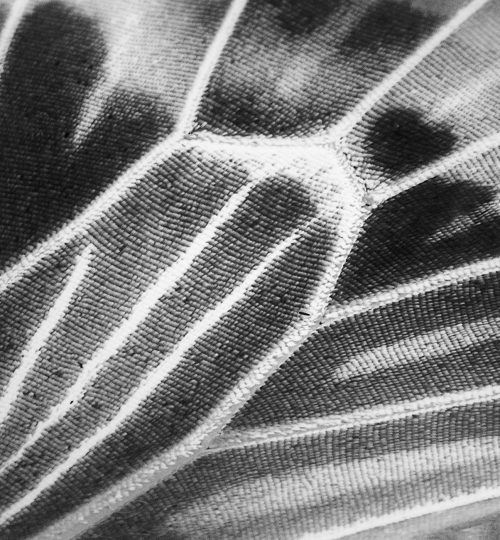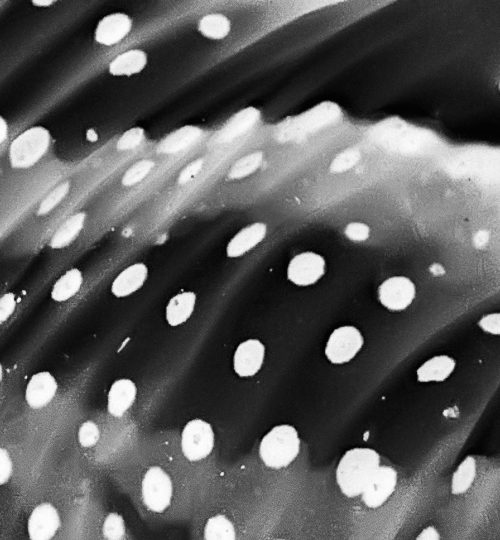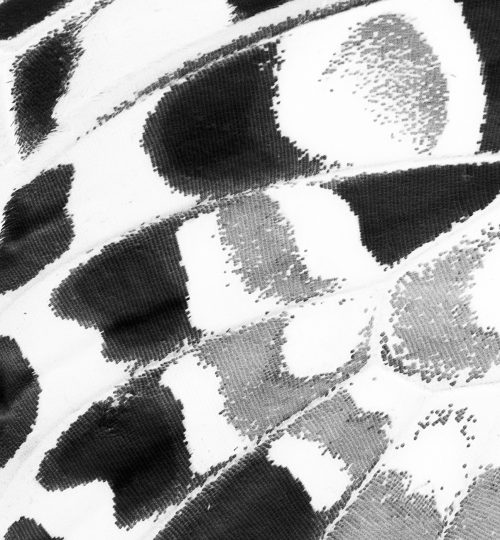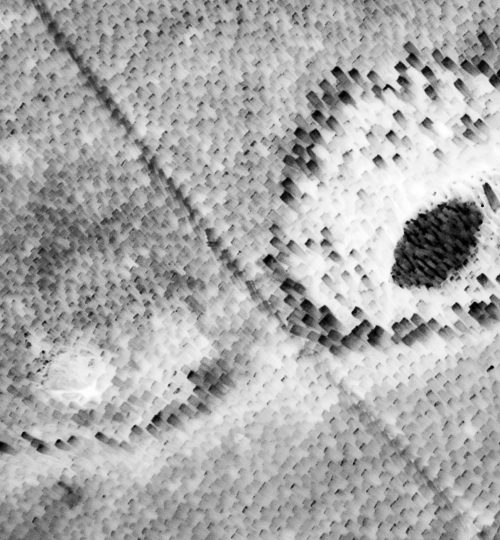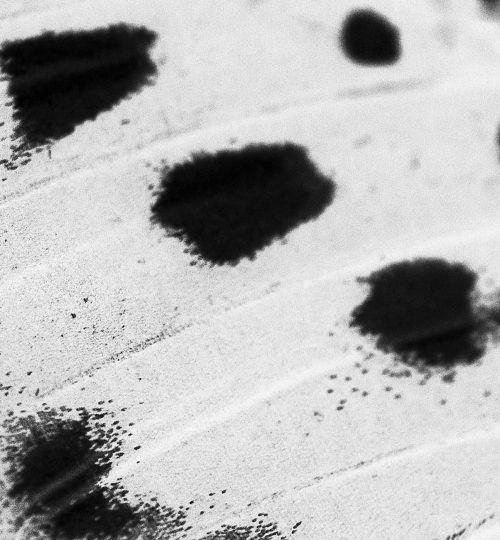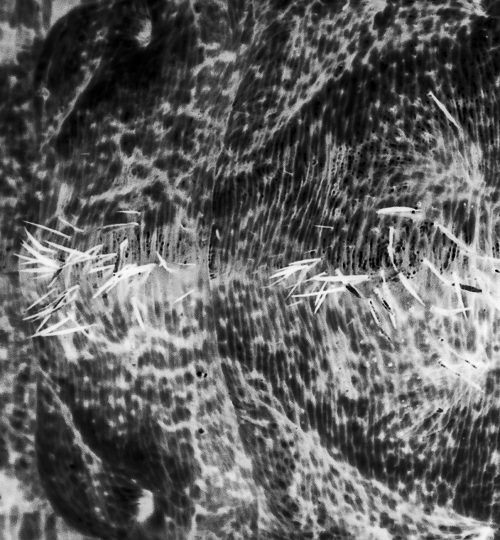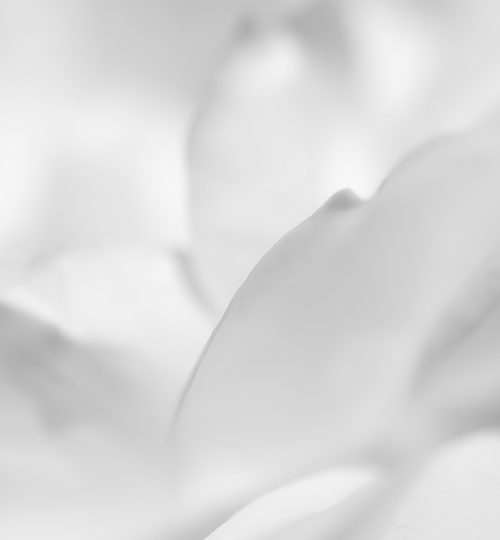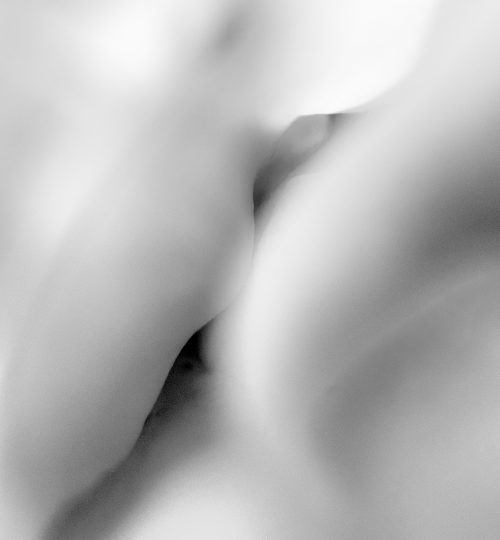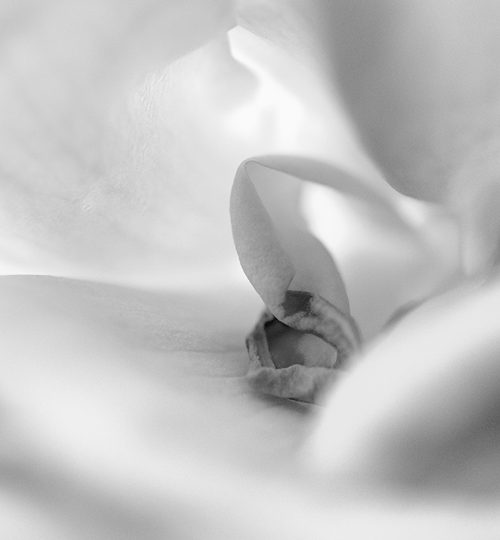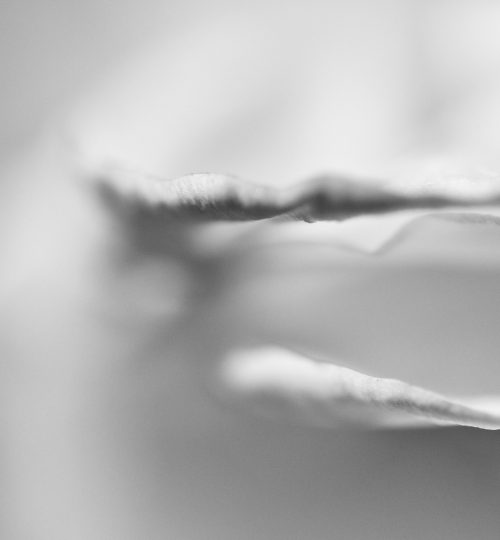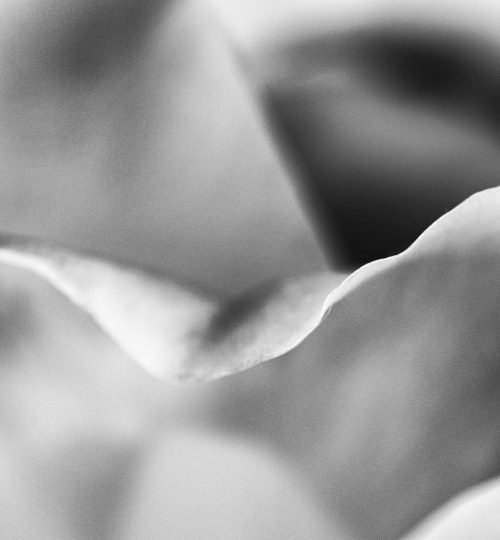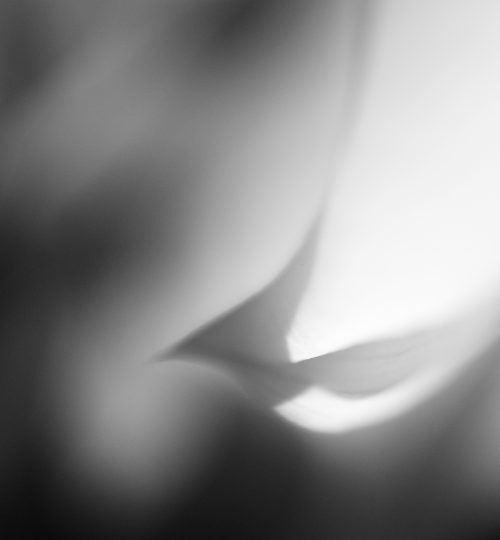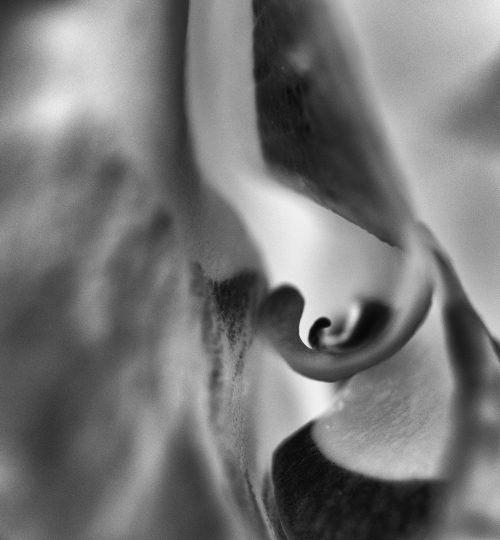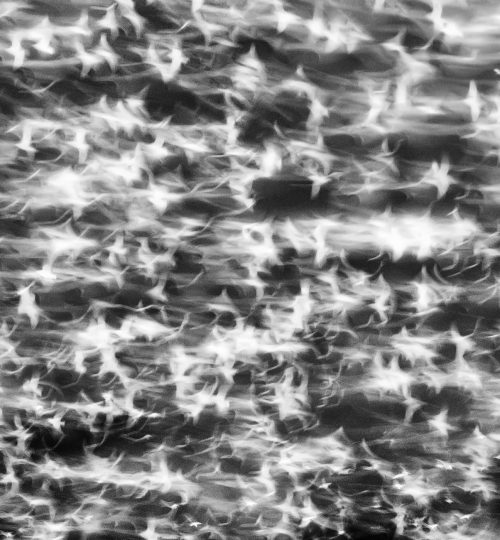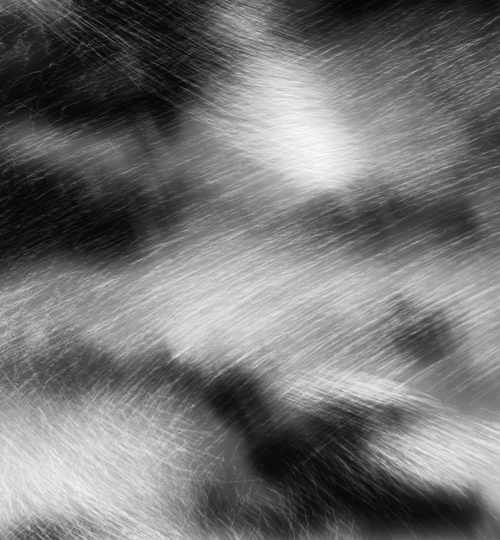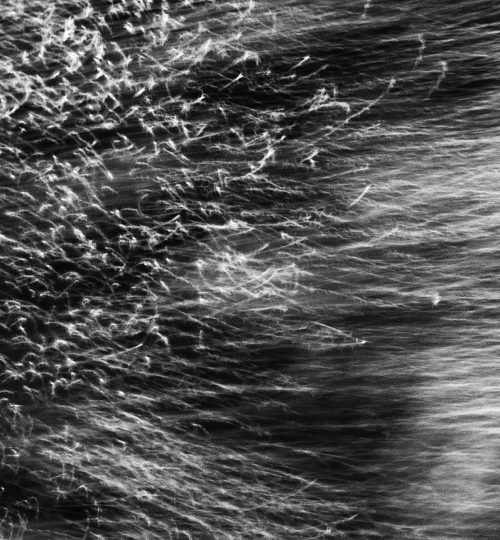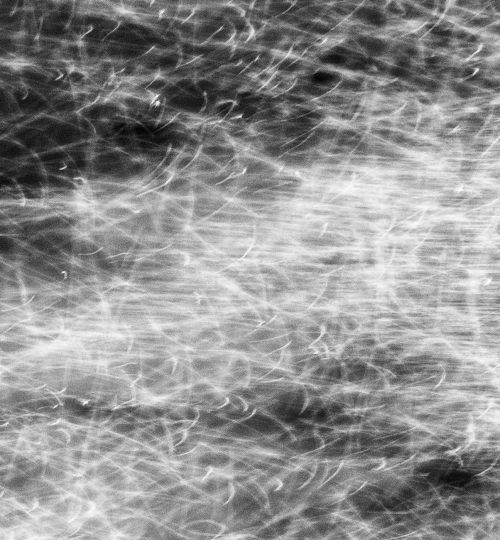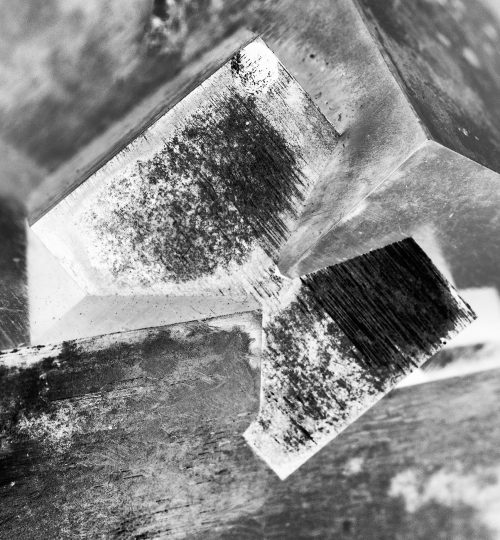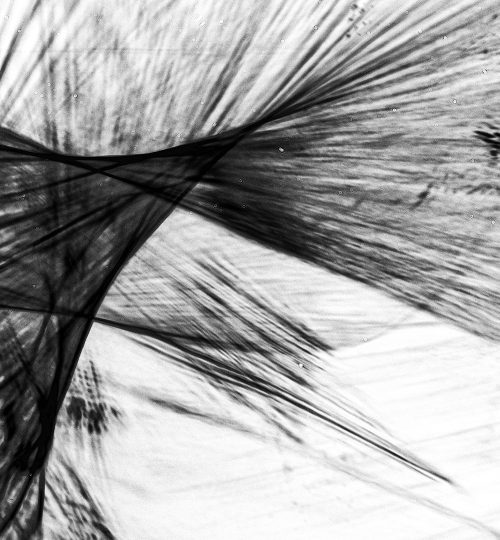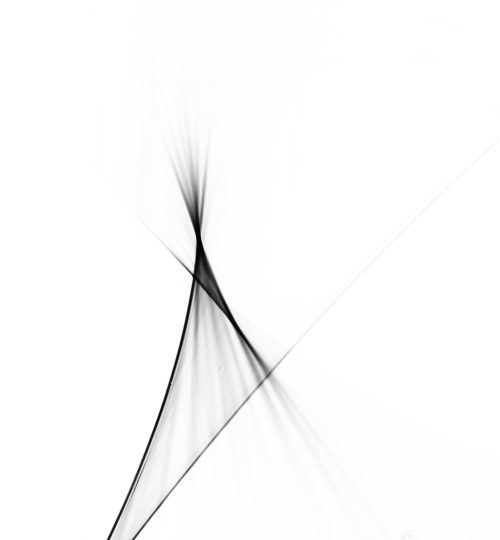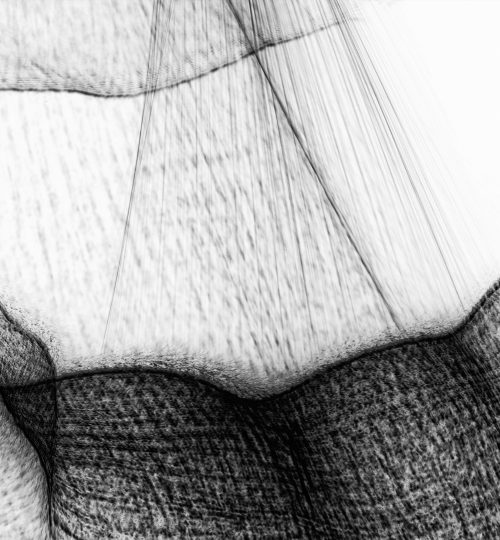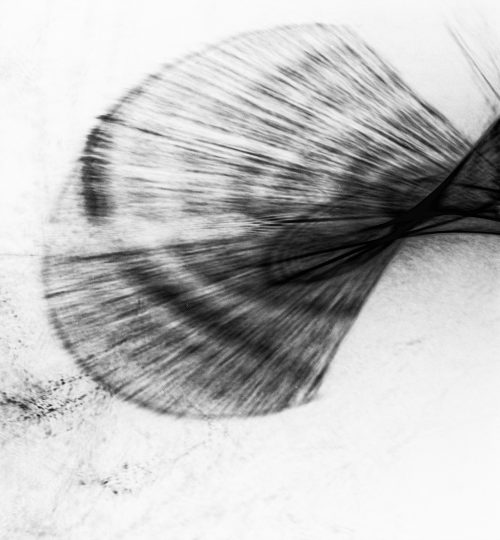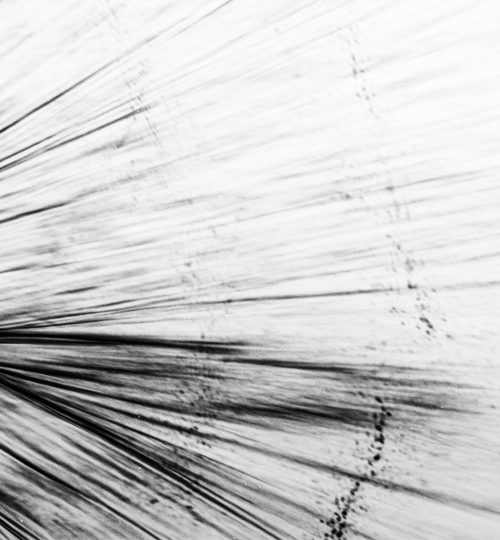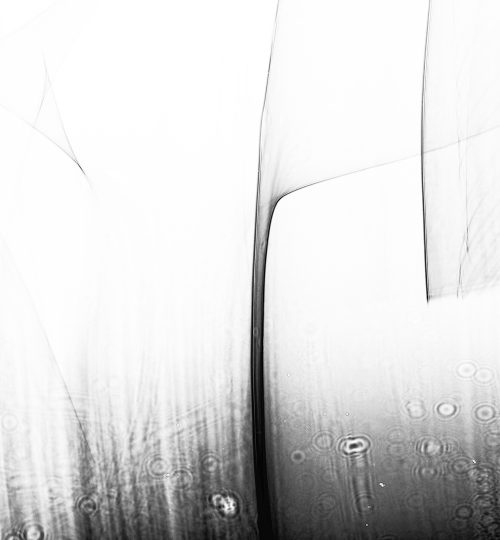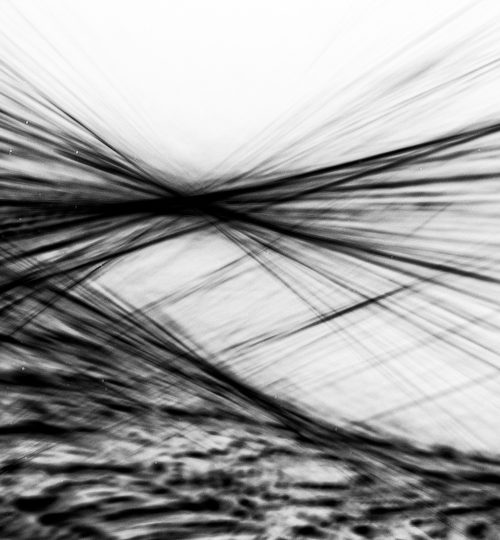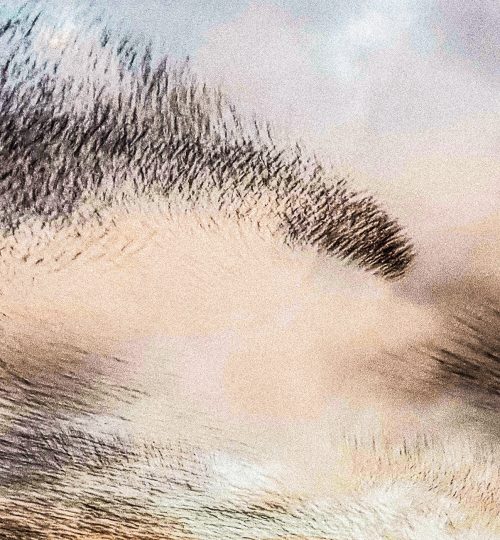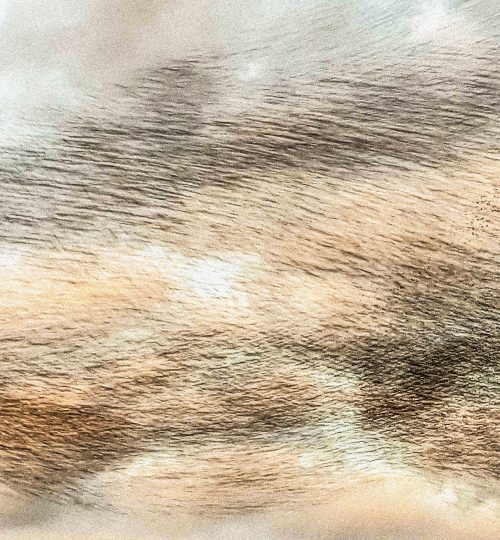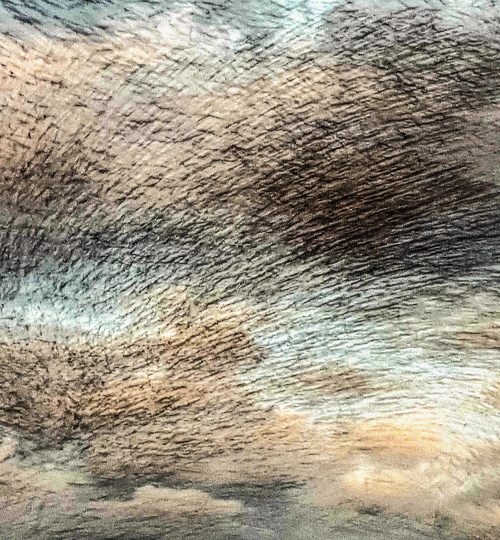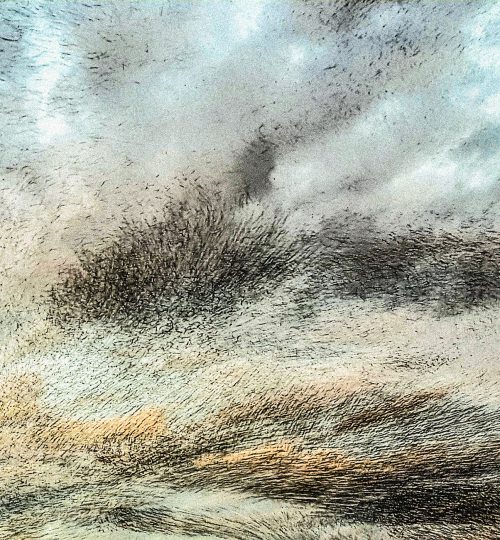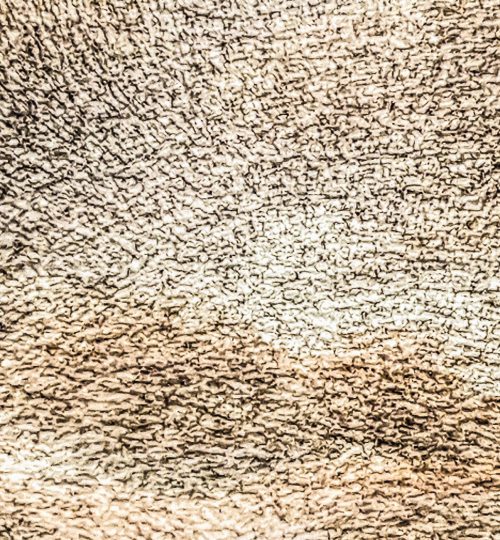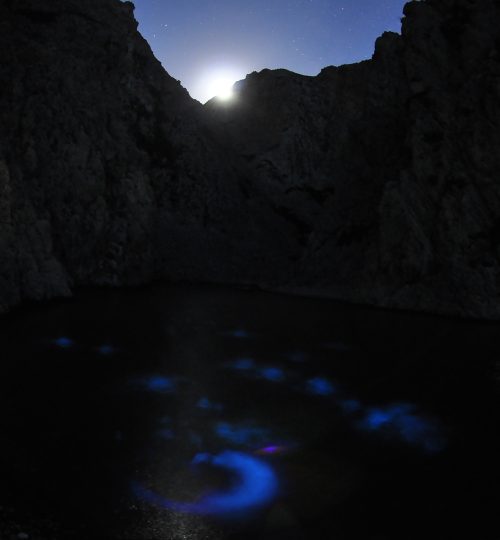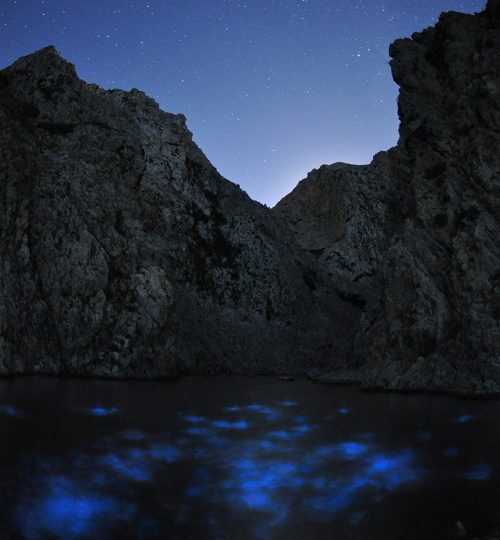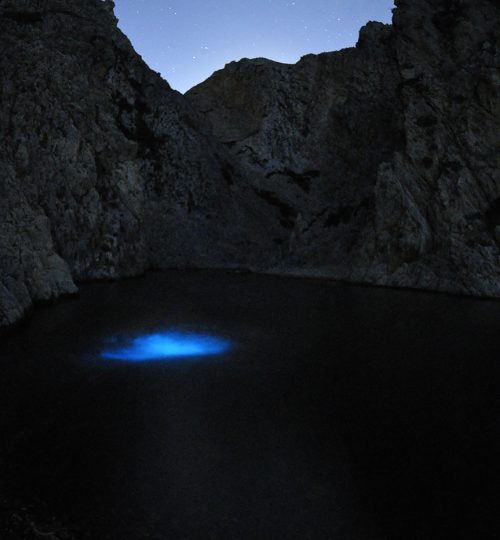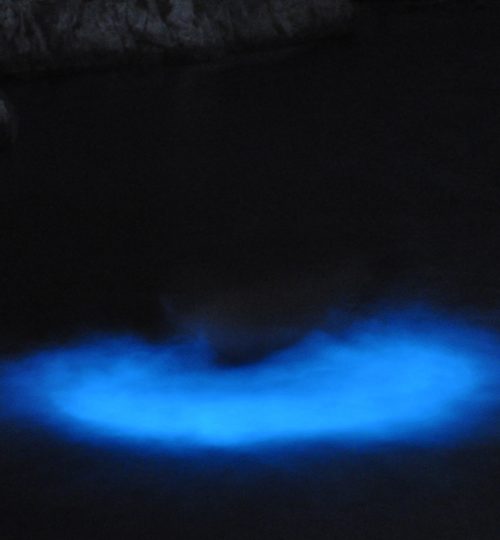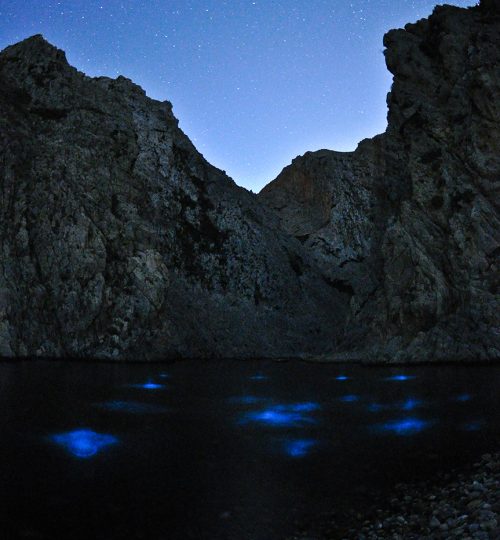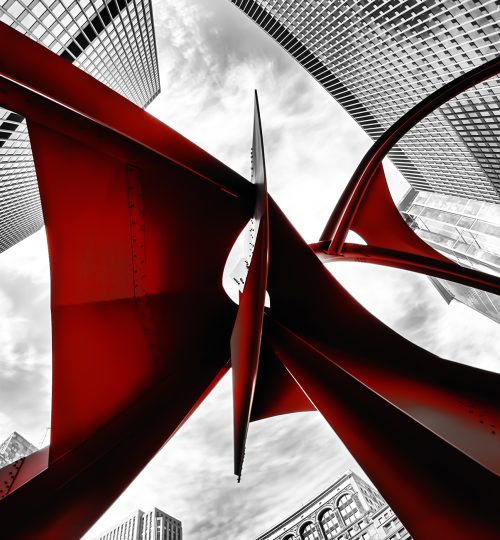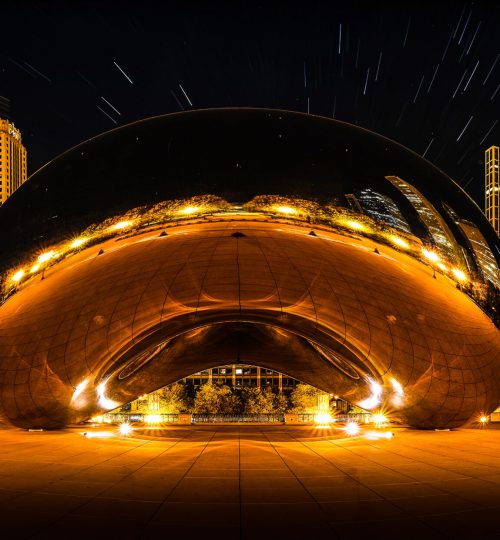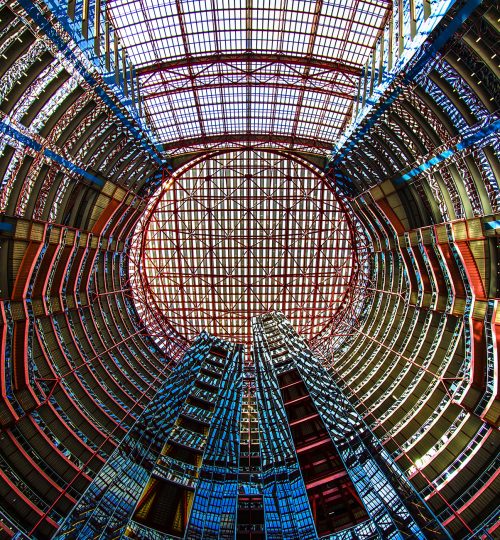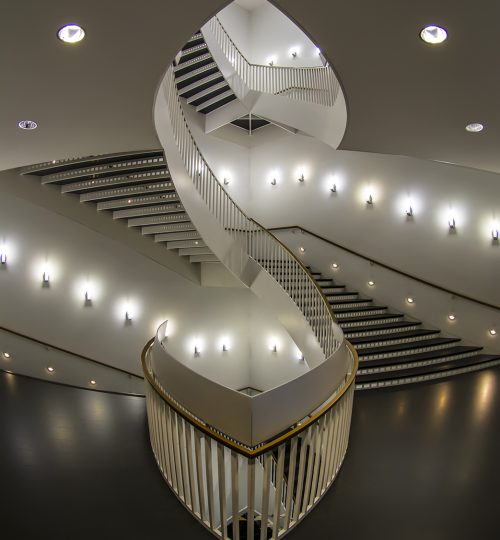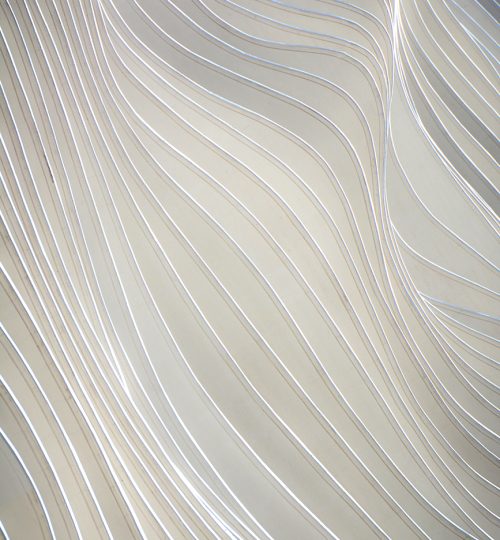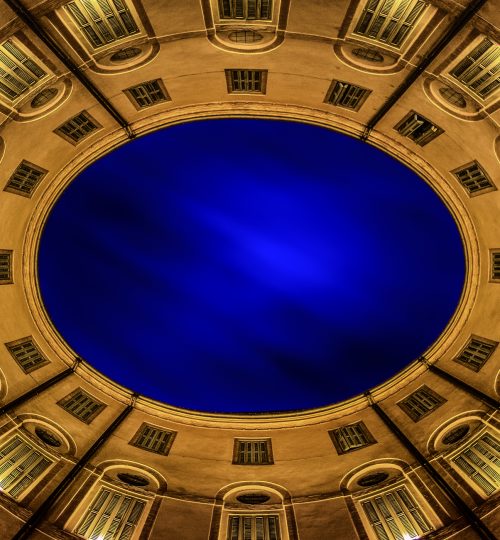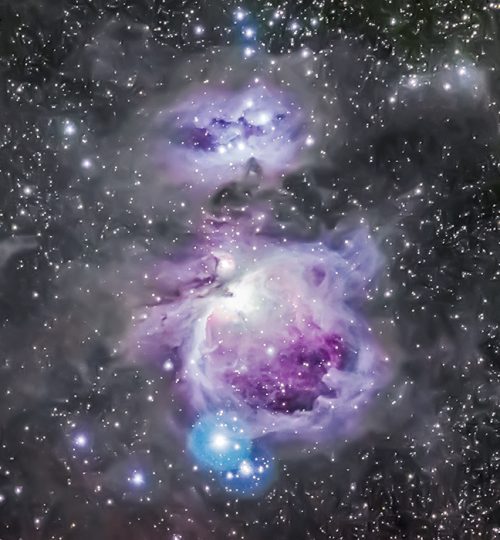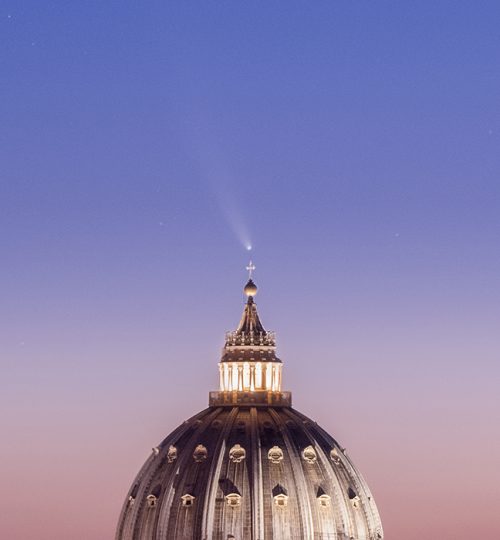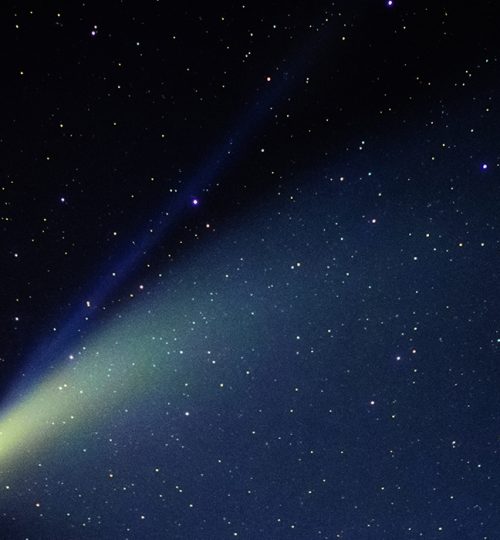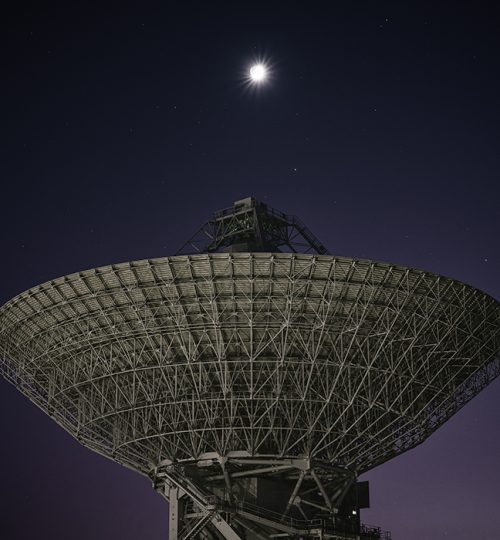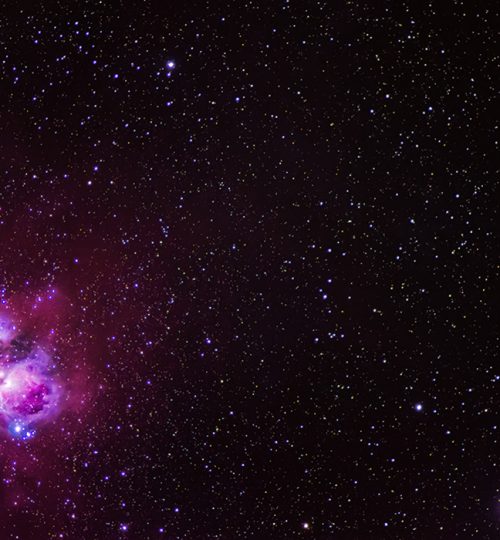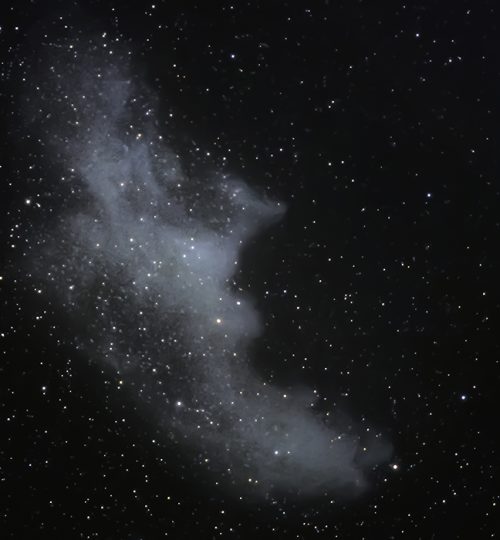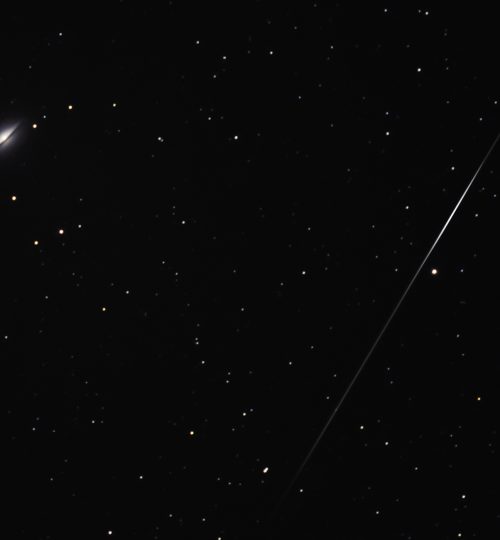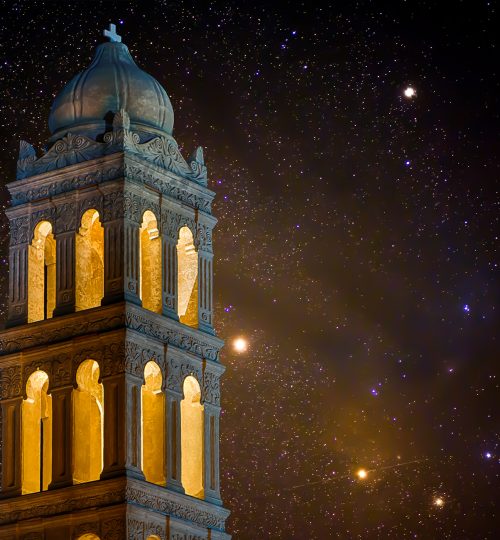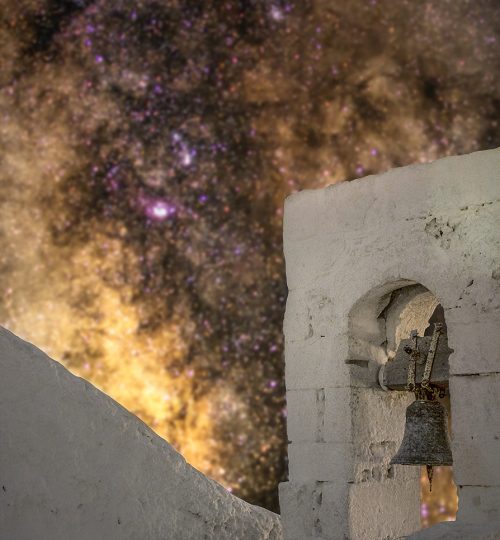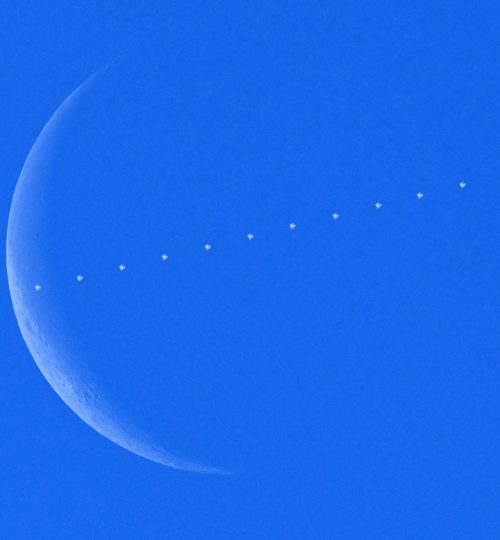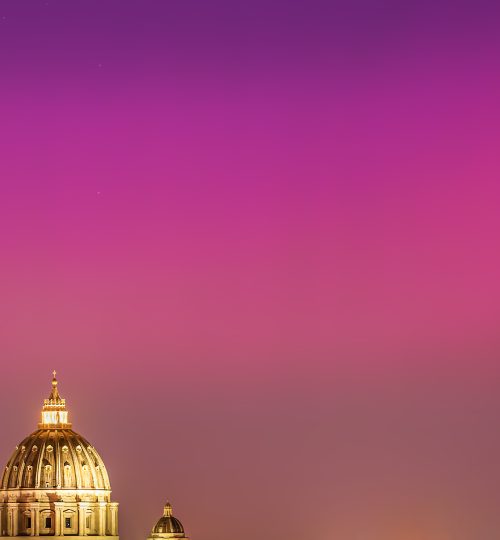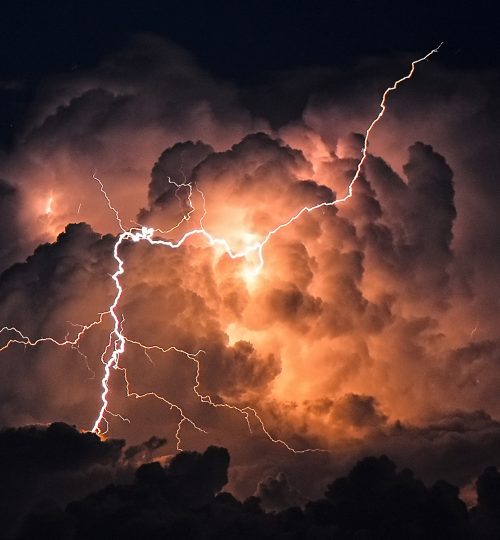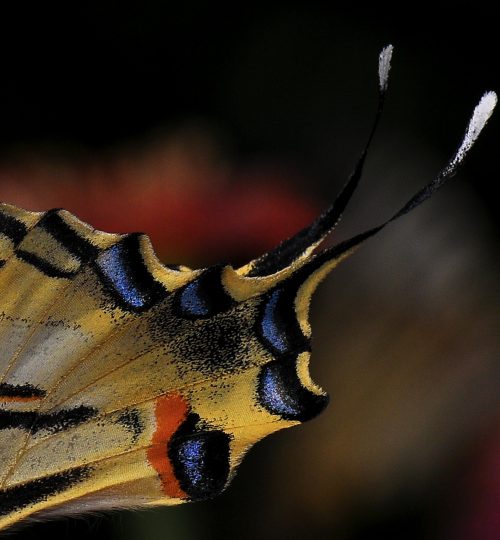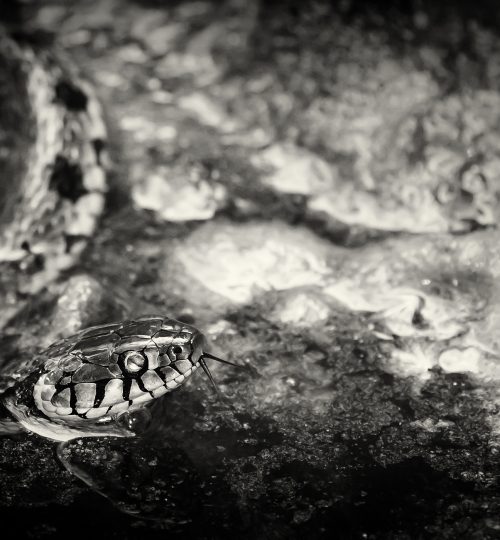THE (IN)VISIBLE SYNPHONY
OF REALITY

PROJECTS
STARt. LOOK BEYOND
Dark matter is not observable, yet it most likely exists. That's what recent astrophysics studies tell us, as scientists can detect its gravitational effects in the universe even though they cannot directly observe it. The very name assigned to this mysterious matter gives us something to consider: the fact that something is not 'visible' does not imply that it does not exist. Our limits often prevent us from perceiving things that actually exist, so, both in everyday life and scientific research, it is essential not to judge by appearances, but instead to always try to look beyond them.
The image shows the heart of our galaxy, located in the Sagittarius region. It was taken using a long exposure and astrotracking. Inspired by the idea of dark matter, as if I wanted to reveal it through my lens, I converted the nucleus of the Milky Way into a negative photo. The stars of the Galactic Center thus become the focal points of my shot, like the colors on Jackson Pollock’s abstract canvases, reversing reality into abstractionism and demonstrating how the infinite beauty of the Universe is itself Art.
R E S O N A N C E
What if we could see sound? We would be immersed in amazing shapes drawn by sound waves in space. Thanks to Cymatics, we can go beyond the limits of our senses, and visualize the patterns created by an acoustic frequency on a fluid’s surface.
The Resonance Project is a tribute to the secret beauty of our world, by showing the fascinating shapes traced on water by selected sound sources, which draw in front of the camera’s lens the invisible symphony of reality.
Photography crosses new frontiers: it becomes a medium to live a particular sensory experience, through the representation of sound in the visual field.
The invisible becomes image and awakens imagination. For each subject, it was chosen the most emblematic shot, which recalls the idea of the represented sound source. The photograph ends up arousing the observer’s perceptive imagination, making you visualize what you do not hear and hear what you do not see.
Earth
Representing the Four Elements (Earth, Fire, Air, and Water), the “Earth” series is dedicated to a selection of sound sources present on our planet.
Universe
The “Universe” series goes beyond terrestrial borders to grasp onto the boundless wonder scattered in space, thanks to the astronomical instruments that allow us to capture and convert the signals coming in from the most distant celestial objects into acoustic waves.
Roman Bells
The "Roman Bells" series shows the sound of an ancient musical instrument, which permeates cities and open spaces all over the world and which strikes time with its tolling, reminding you to raise your eyes to the sky. Specifically, the bells’ sounds of the four Major Papal Basilicas, plus the Basilica of Saints Sylvester and Martin on the Mounts, have been here translated into images.
INVEARTH
The “InvEarth” Project is composed of several Photographic Series focusing on the three words forming its name: Invert + Earth + Art.
In each series, a definite natural subject was chosen from one of the ‘four elements’ (Water, Earth, Fire and Air) as exemplary symbol of our planet.
Every selected subject was shot with the aim of revealing its unusual and intrinsically artistic side, then developed in black & white. The lack of colour represents our world’s harmonic dichotomy: the incessant dance between day and night, light and shadow, yin and yang that has always marked the passage of time and the advance of Evolution.
The latter - the primordial principle governing life on Earth - is finally symbolized by the reversal of shots into negative images. This chromatic inversion stands in fact in memory of film, which for years was the essence of photography, before being almost completely supplanted by digital formats.
High voltage
The “InvEarth” Project is inaugurated by a series dedicated to lightning, as they may have been present on our planet since its first billion years and seem to be at the root of life. Many scholars, in facts, have speculated that this ancient non-biological process played a crucial role in the development of early atmosphere and could also have been responsible for the generation of early living forms on Earth, because it produces biologically useful material through the oxidation and reduction of inorganic matter. So I captured a series of lightning bolts inside an imposing cumulonimbus which unleashed a night storm over Peloponnese (Greece), to make them seem roots that sink into the sky.
Toxic
The second series focuses on the possible first ancestor of all animal life on our planet: jellyfish, a fascinating and pulsating trap floating into the seas since over 500 million of years, like an immortal ensign of biodiversity. Its fatal beauty is here represented by two species of the genus Chrysaora, with its geometric drawnings adorning the bell, lace-edged arms and long tentacles hiding a miriad of nematocysts ready to sting.
Metamorphosis
The butterfly, a small ‘magical’ creature that experiences a complex mutation during its existence, was chosen as subject of the third series. At the last phase of their four-stage life cycle (egg - caterpillar - chrysalis - adult), butterflies perform a spell: the pupal skin splits, the adult insect climbs out and, after its wings have expanded and dried, it flies off. Adults are characterized by four wings entirely covered with scales that give the name to the order butterflies belong to: Lepidoptera (Ancient Greek “lepís”, scale + “pterón”, wing). Through microphotography we can observe these structures of scales and hair, characterized by a myriad of colours, shapes and patterns, as one of the highest artistic expressions created by Nature.
Velvet
The rose is protagonist of the fourth series, with evocative shots that lead us directly into the arms of its velvety petals, as if we were a pollinating insect that seeks the way to reach its lush heart. This series is a tribute to the flower symbol for excellence of love and passion, which has been a source of inspiration for poets, painters and artists since time immemorial: appeared on Earth before man (traces of roses have been found in fossils dating back to over 25 million years ago), the “queen of flowers” was known already 4700 years ago in China for its healing qualities, it arrived in the western world thanks to the Egyptians, who cultivated it already in 1200 BC, and was appreciated by the Romans for the heady scent and the ornamental spreading of petals during banquets.
Synchrony
If you are a tiny creature and are the target of many lethal predators, you have to find an excellent defense strategy. In this, the starlings are true masters: coordinating their fast movements within flocks, they dance in the sky in unison pretending to be a single large entity that confuses and escapes its predators’ hunt. This survival technique is a fascinating ‘evolutionary trick’ perfectly demonstrating how unity makes strenght. For the fifth series of the “InvEarth” Project, flocks’ flight was innovatively taken at long exposure in the autumnal sunsets of Rome, allowing designs to emerge in the sky as if the starlings were a myriad of pencils in the hand of a single painter.
Cubic
The fool’s gold was once nicknamed this mineral which, due to its golden color, was mistaken for the much sought-after metal. Pyrite - this is its name - is instead a very common mineral, mainly composed of iron disulfide, which is nowhere near as worth as gold. However, the worth determined by the market laws does not correspond to its real value. You can grasp it by admiring one of the crystalline forms of pyrite: the cube. A stunning sprout, for its simple perfection, created by the Earth, into the earth. This is the umpteenth wonder that our planet will allow you to grasp everywhere, even underground, if you don't stop at the surface. In this series the cube becomes the absolute protagonist, to reveal the real value of unreal gold.
Into the light
What enabled cell metabolism to start in the Earth's primordial soup around 4 billion years ago? In other words, what were the mechanisms that allowed the first cells to begin life? Every living thing needs energy. At the basis of the metabolic process that allows energy to be derived from matter are enzymes, molecules of a protein nature that contain an iron-sulphur group. An experimental University research team has investigated how these fundamental metal groups at the centre of the structure of enzymes originated, showing how UV light is responsible for their abiotic synthesis. Light not only witnesses electromagnetic events in cosmic history, it also plays a leading role in the origin of life on Earth. To pay homage to its leading role in triggering the first 'vital sparks', in this photographic series I have used an experimental technique that, without the use of lenses, allows the refractions of light particles, the photons, to be portrayed at the instant they interact with matter.
SERIES

SKY PAINTERS
If you are a tiny creature and are the target of many deadly predators, you have to find an excellent defense strategy. In this, the starlings are true masters: coordinating their movements within large flocks, they dance in the sky in unison pretending to be a single entity that confuses and escapes its predators’ hunt.
I took their flight in the autumnal sunsets of Rome at long exposure, allowing designs to emerge in the sky as if the starlings were a myriad of pencils in the hand of a single painter.
Shield
Esplenade - Theatres on the Bay (Singapore)
MEDITERRANEAN BIOLUMINESCENCE
In September 2013 Simone has discovered and documented, with Michela Cecconi, an amazing and unexpected natural phenomenon that illuminated the lake Kakià Lagada, placed between the end of a beautiful canyon and a small beach in the Greek island of Kythera: when they moved its water, it turned biolumiscent!
This marvel of nature was observed in that lake for the first time and it was probably due to an unusual (and probably temporary) high concentration of plankton, in particular of a kind of dinoflagellate protozoa (maybe the species Lingulodinium polyedrum or Noctiluca scintillans), and it can be considered quite rare in the Mediterranean, as it is most commonly observed in warm coastal waters of Australia (Gippsland Lakes), Maldive, India and Southern California.
The biologists believe that some dinoflagellates developed bioluminscence as a defence mechanism, lighting up when they sense a predator coming near.
The breaf displays of green-blue light were very brilliant to the naked eye, but relatively dim for photographic purposes, so that these pictures required long exposures and high ISO.
GENRES
ARCHITECTURE
ASTROPHOTOGRAPHY
All of the photos were taken with a non-modified reflex and astro-tracker.
